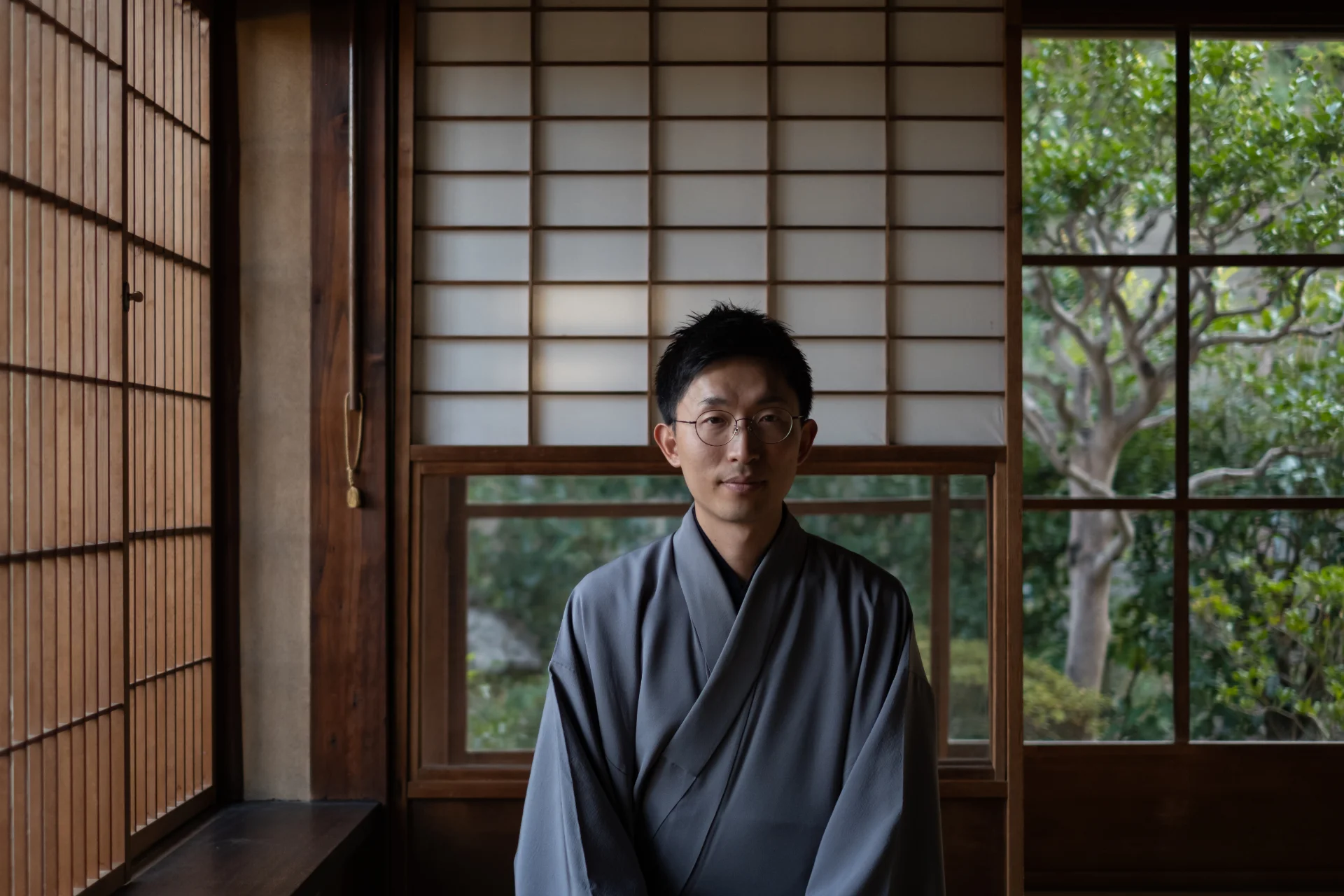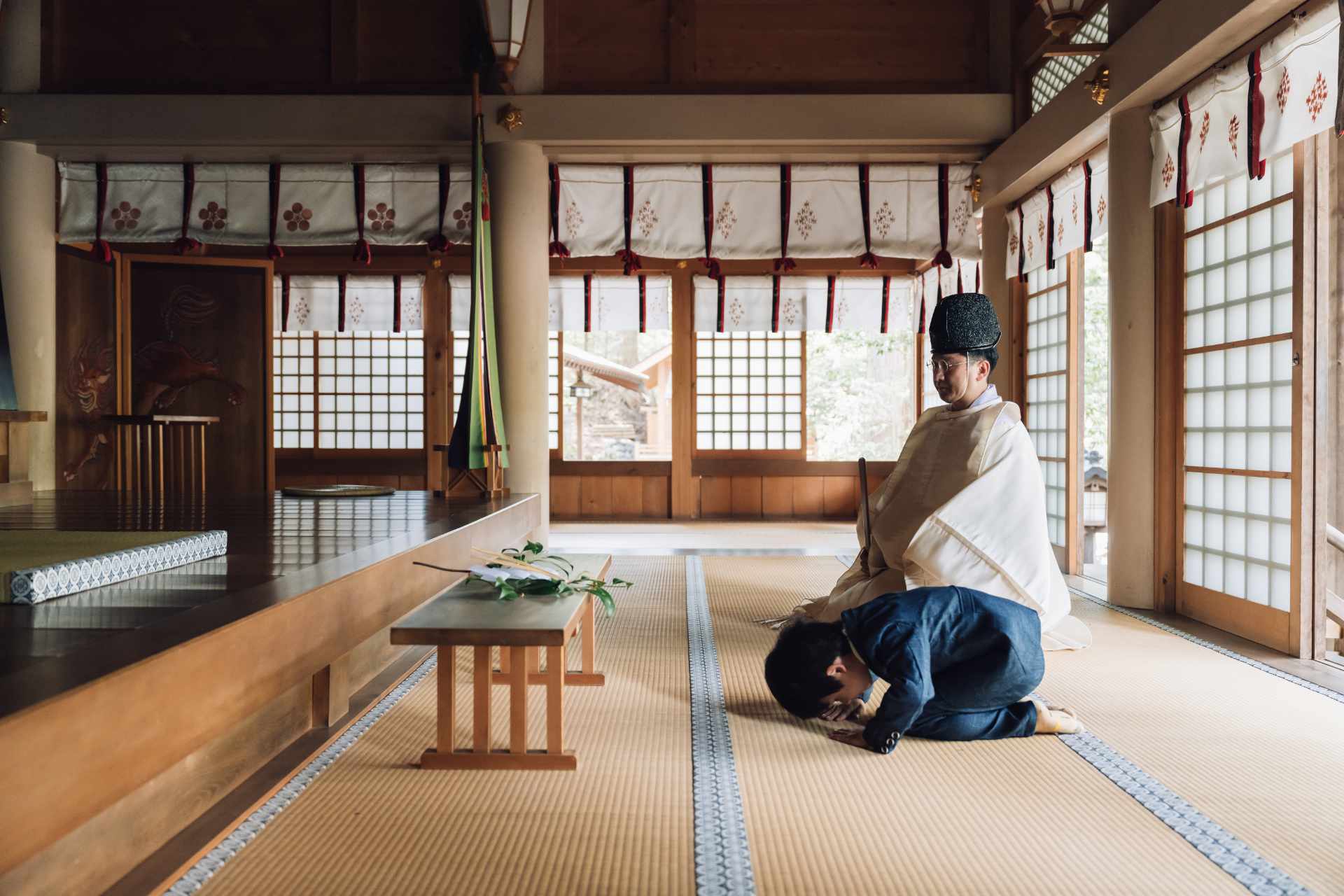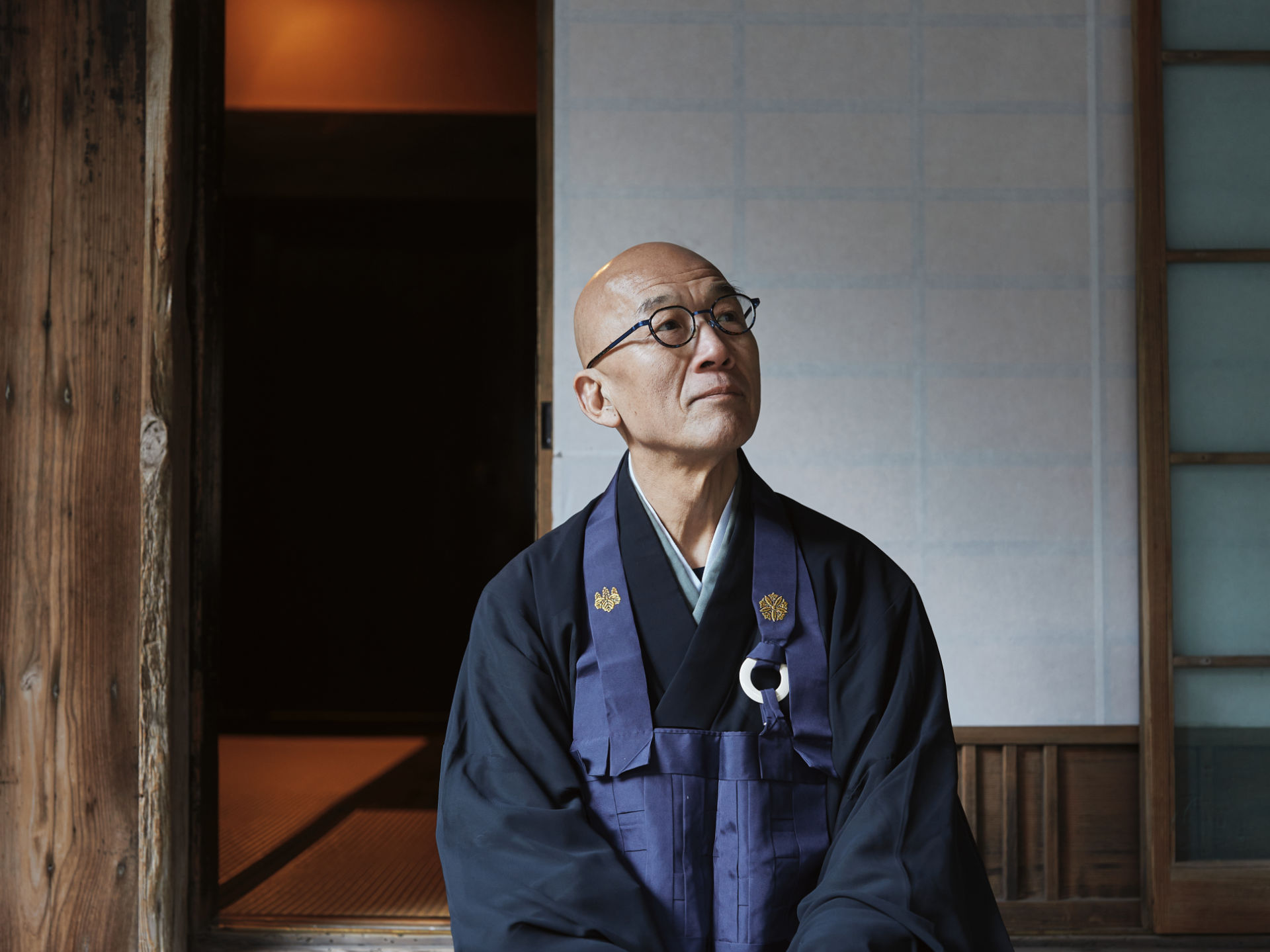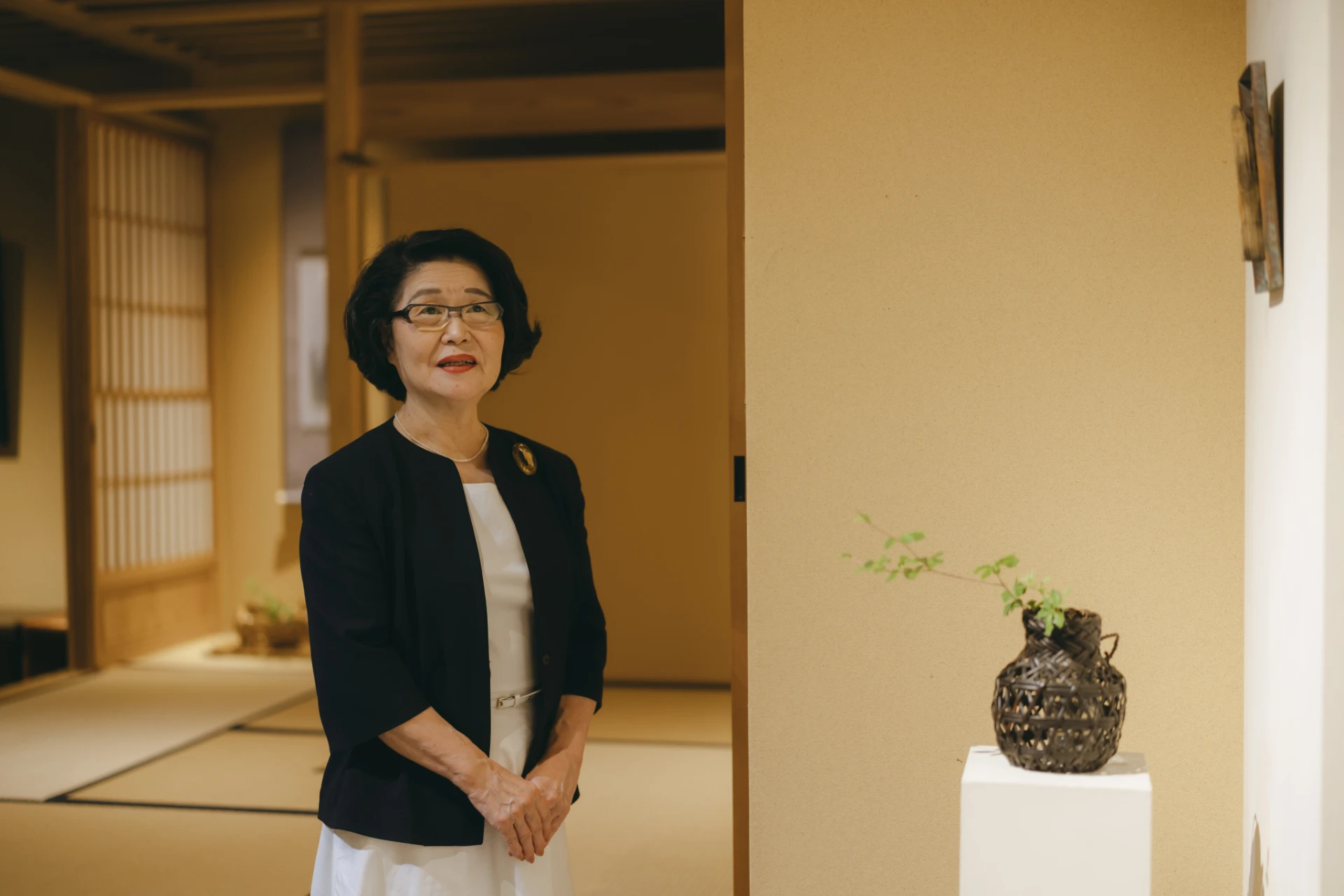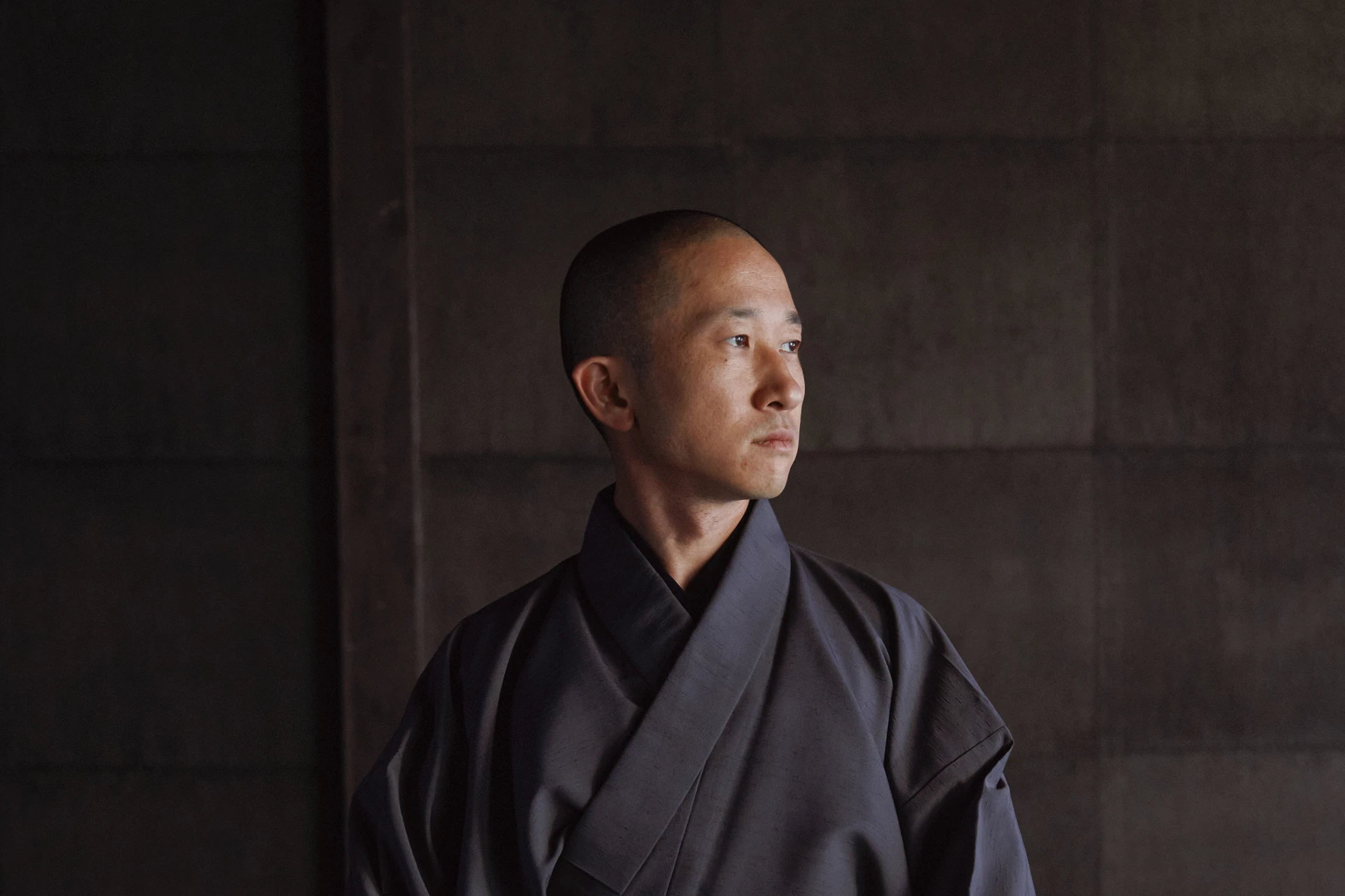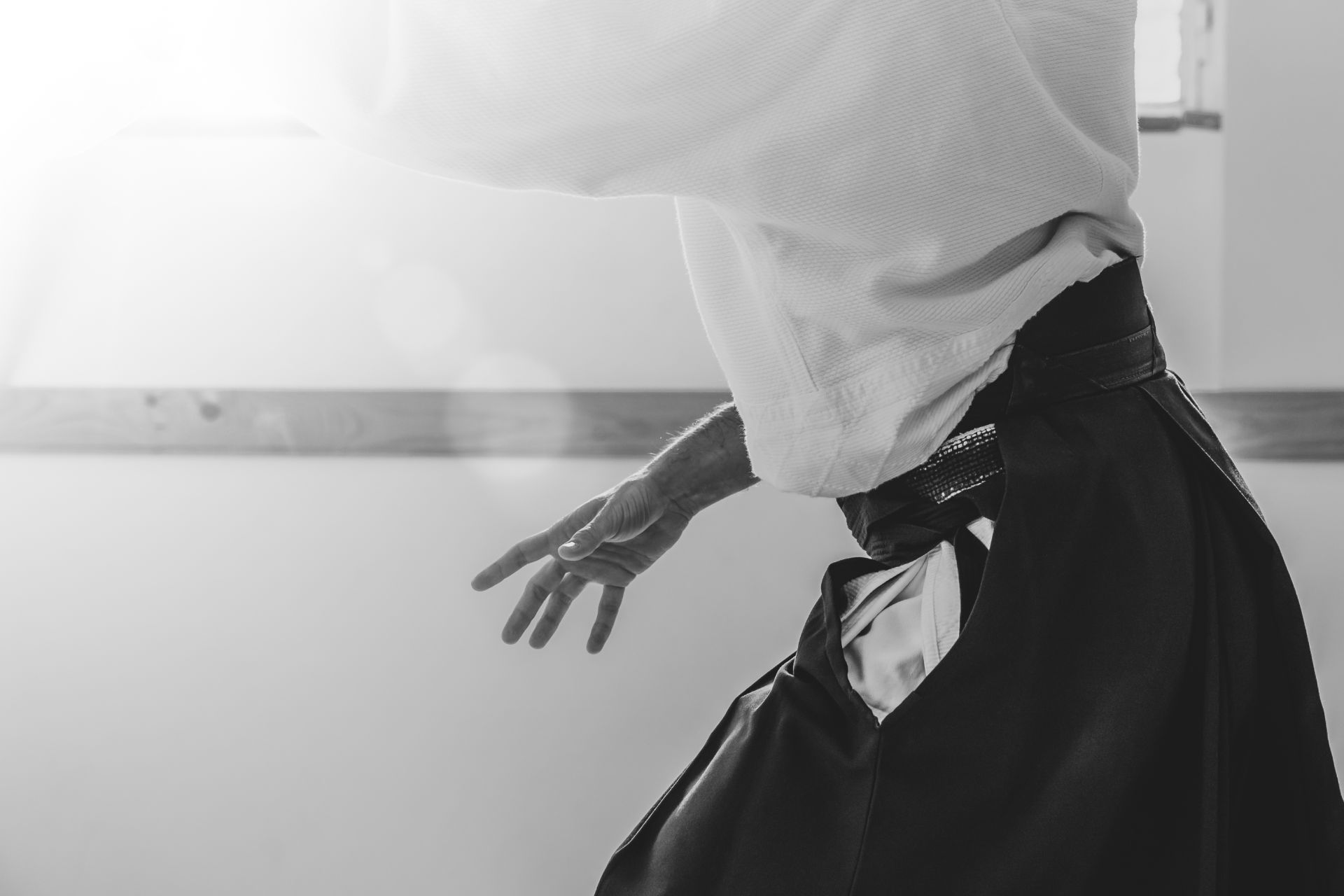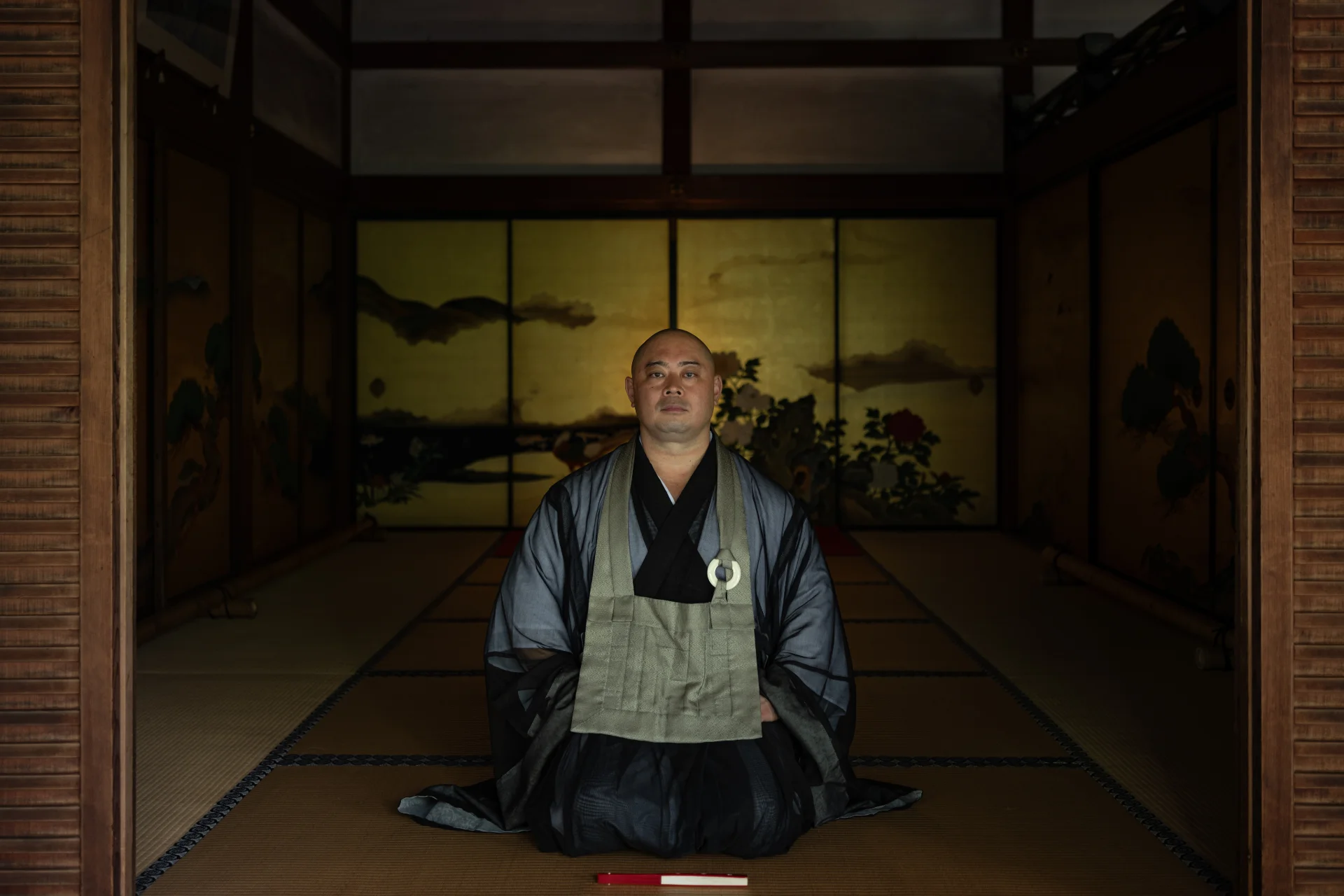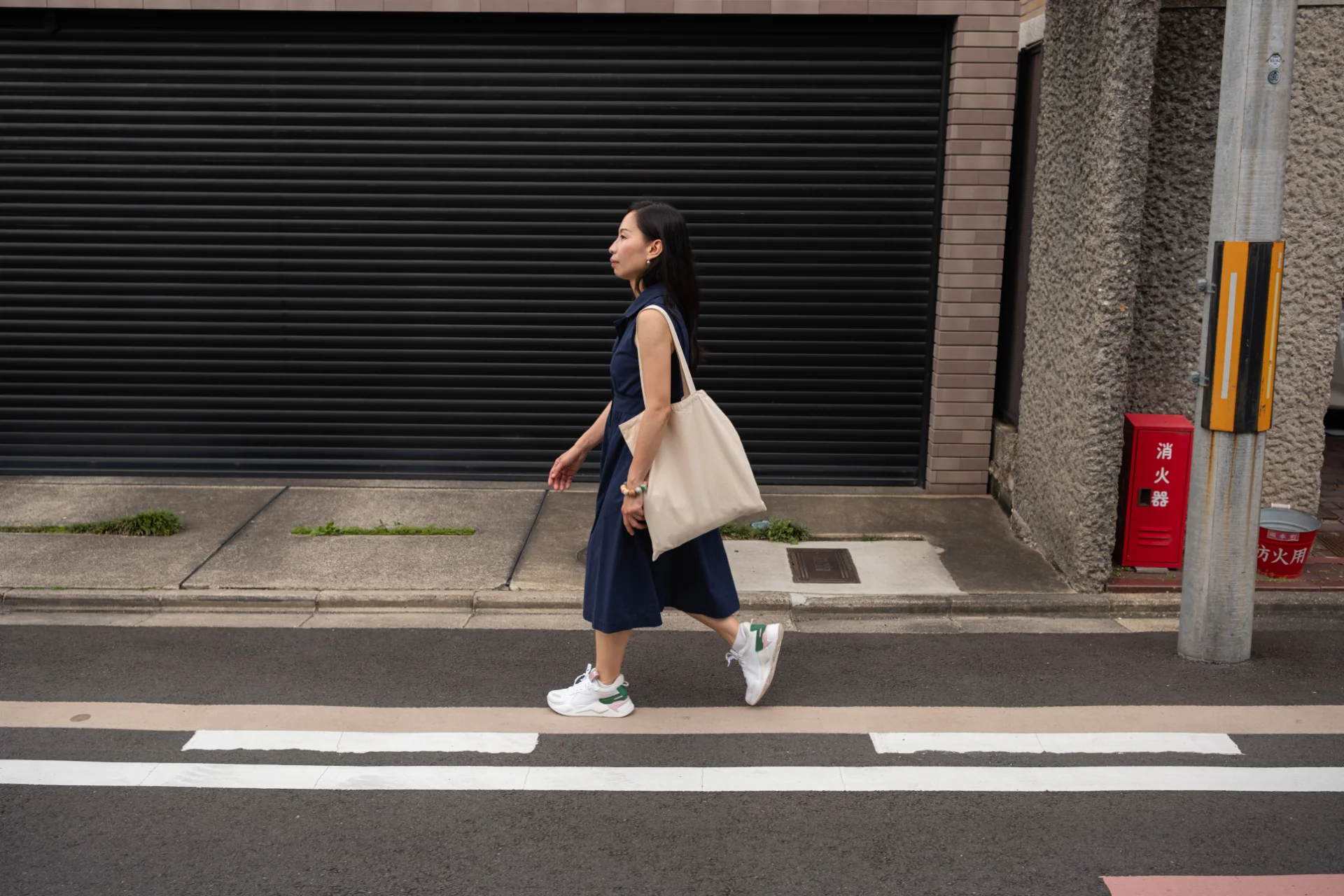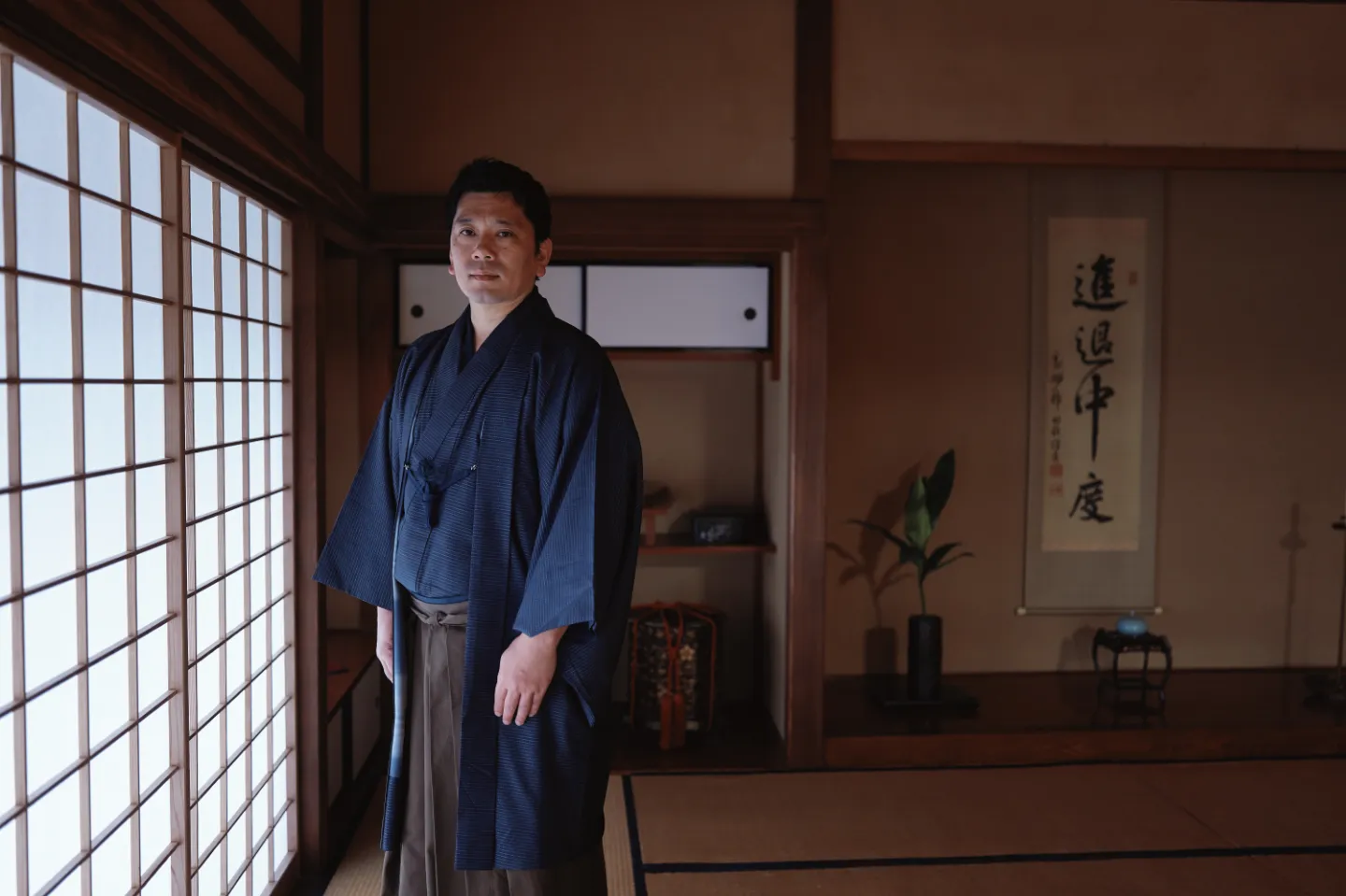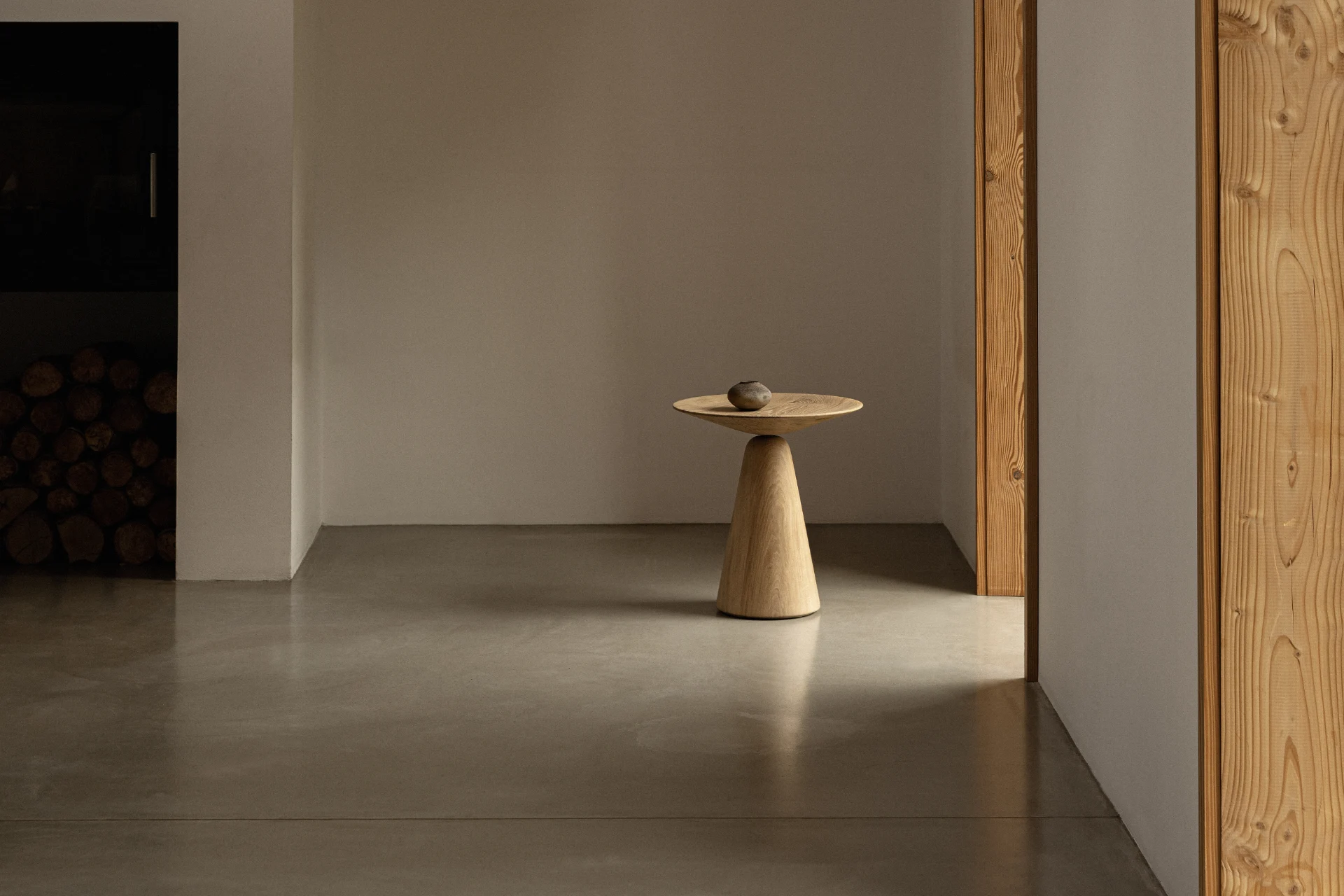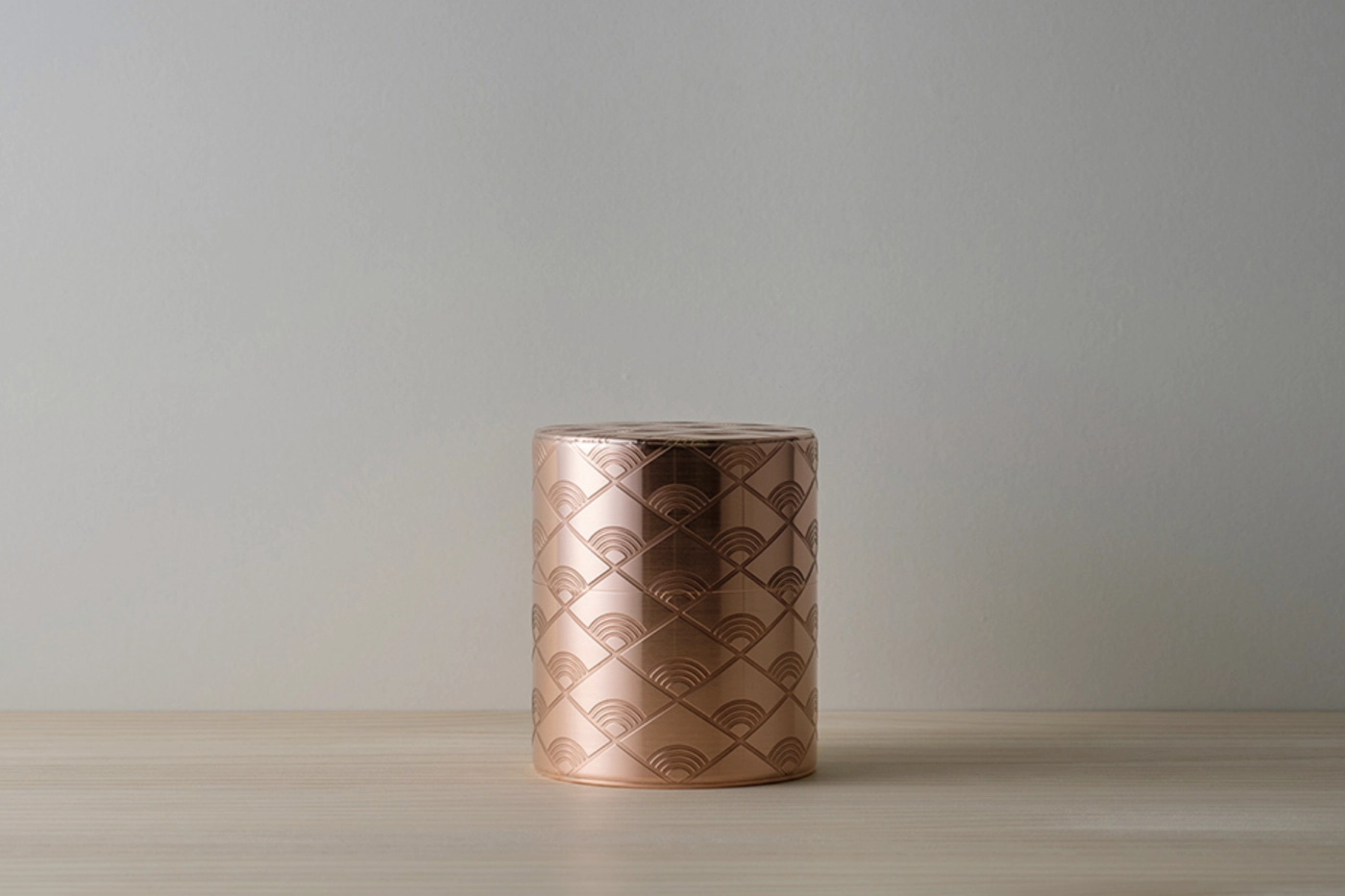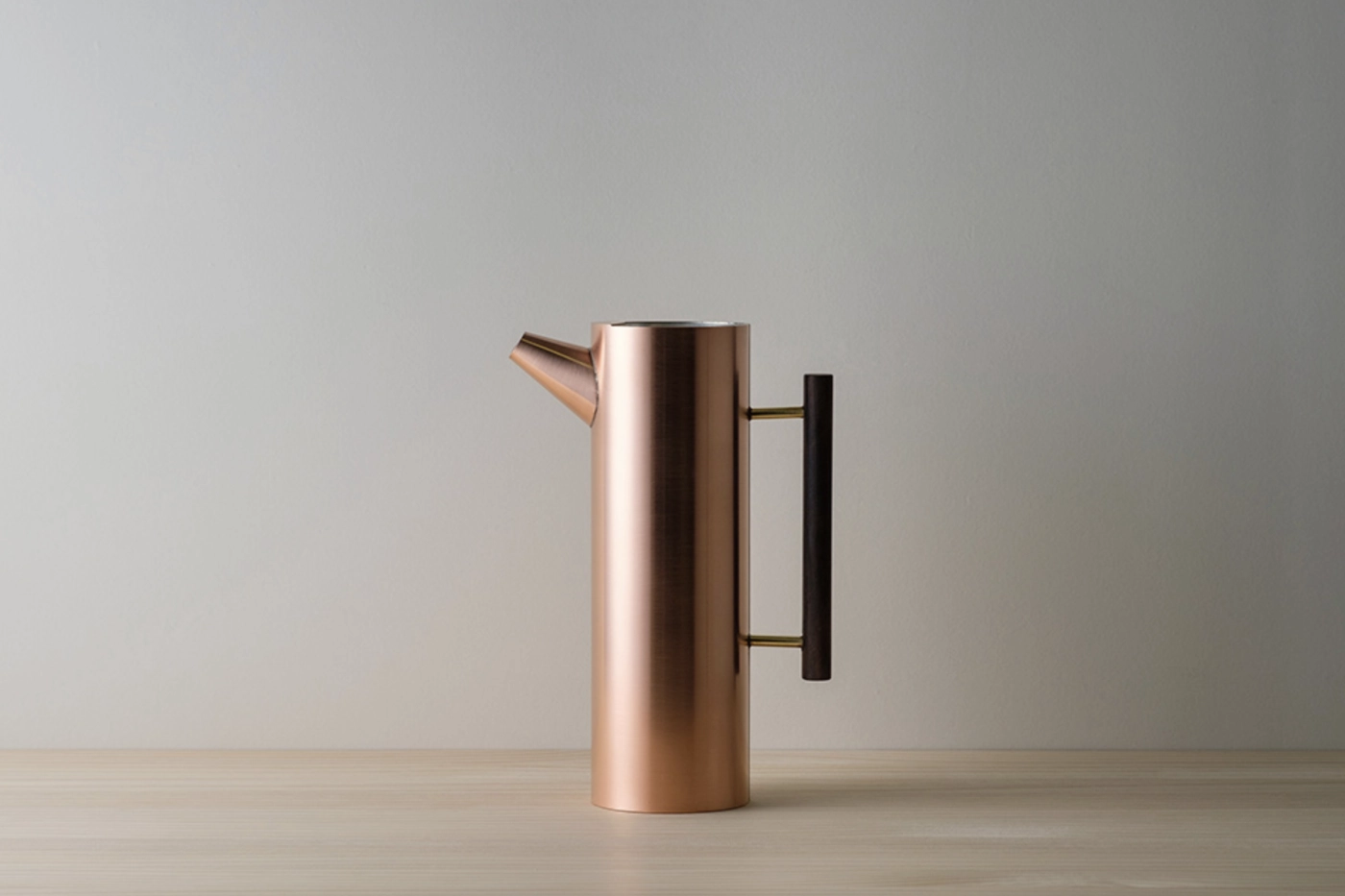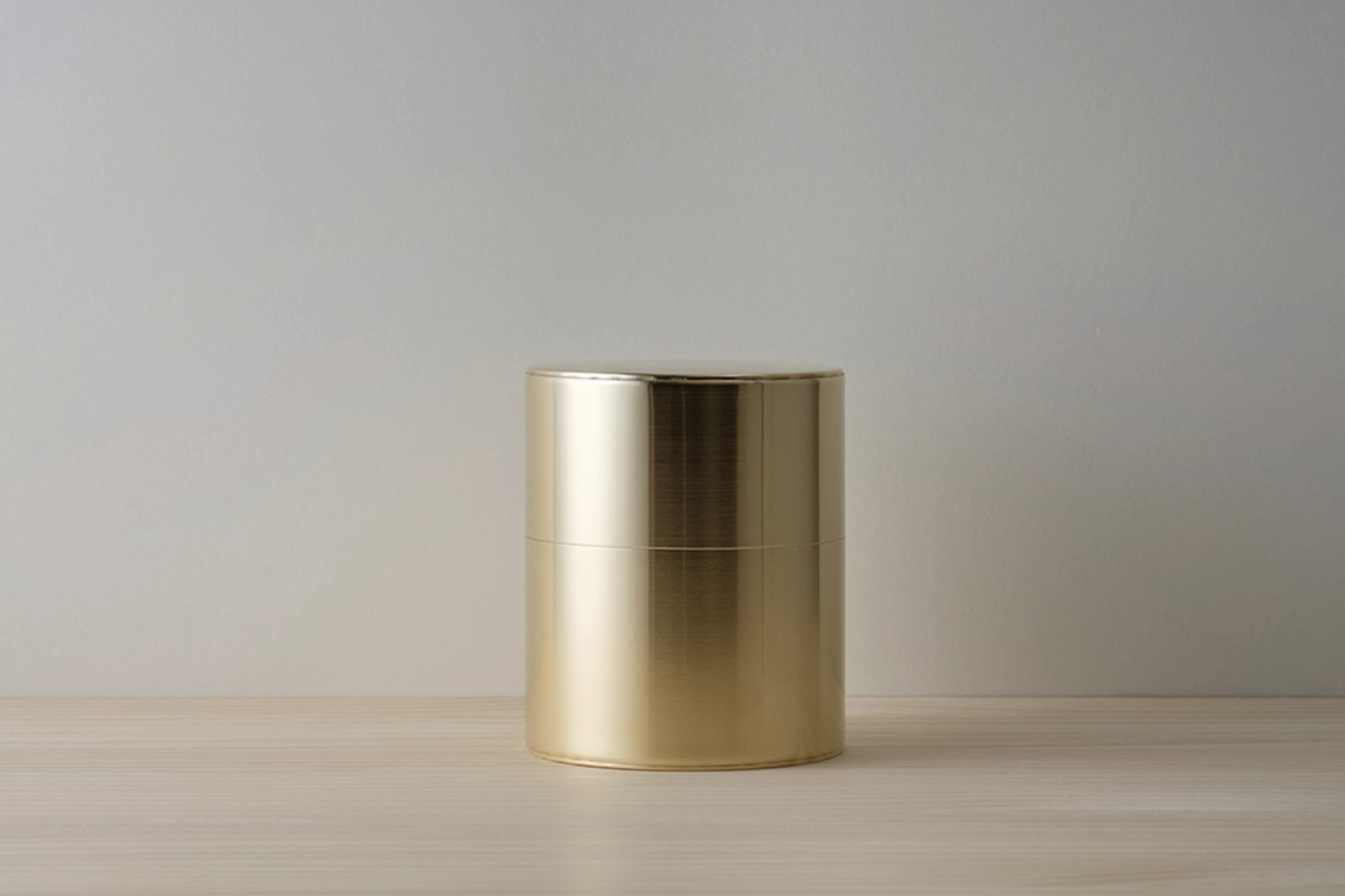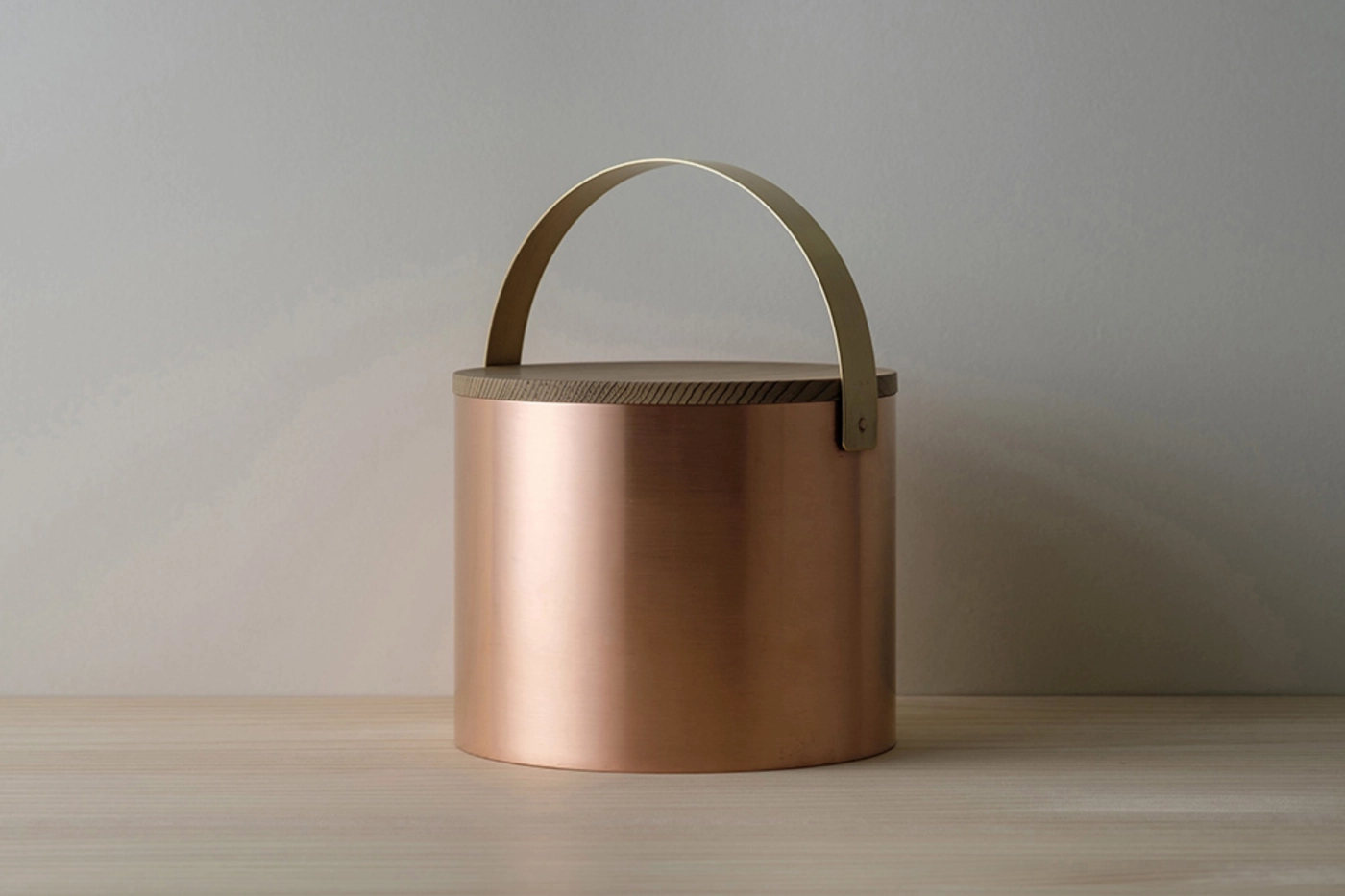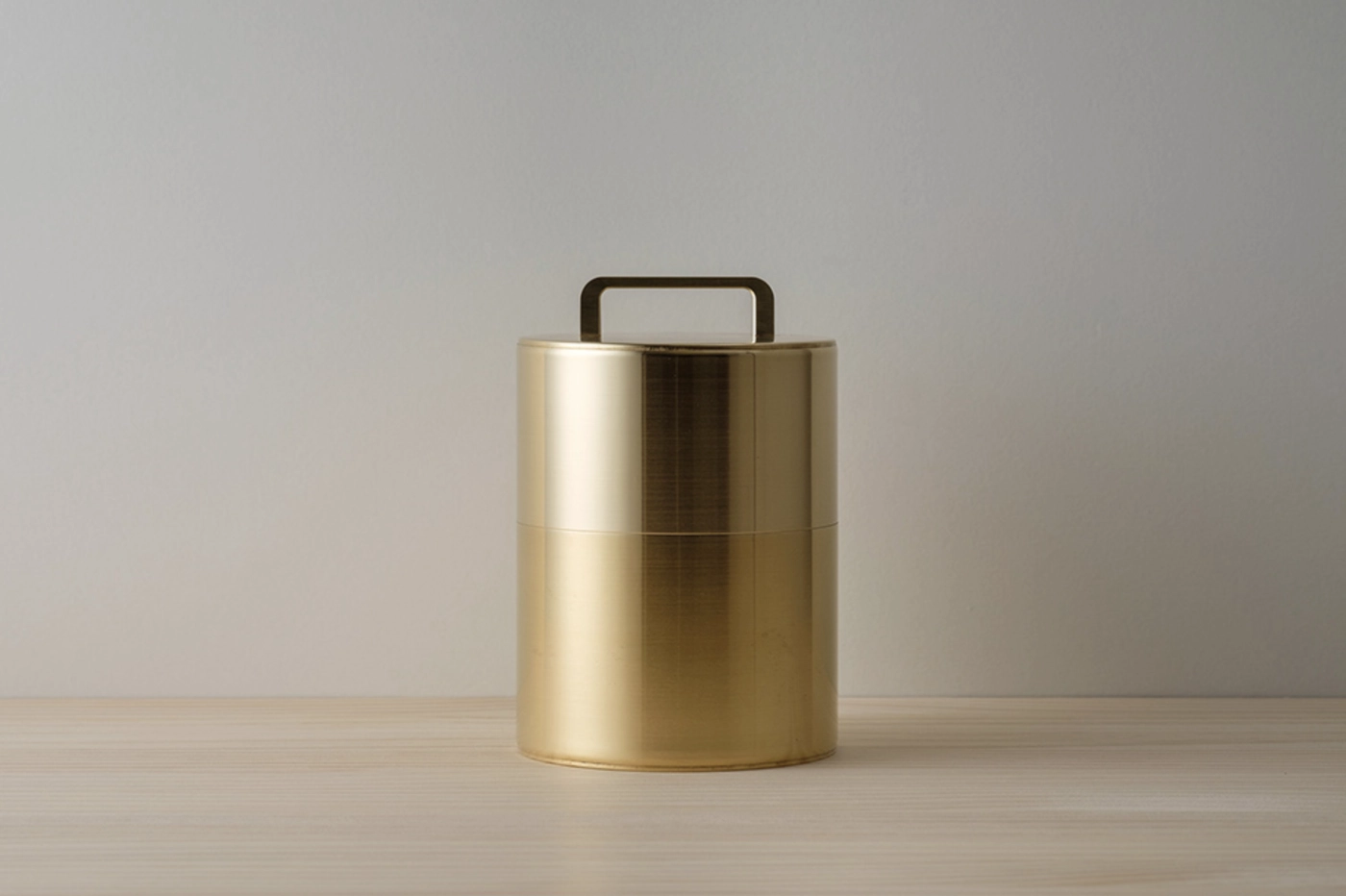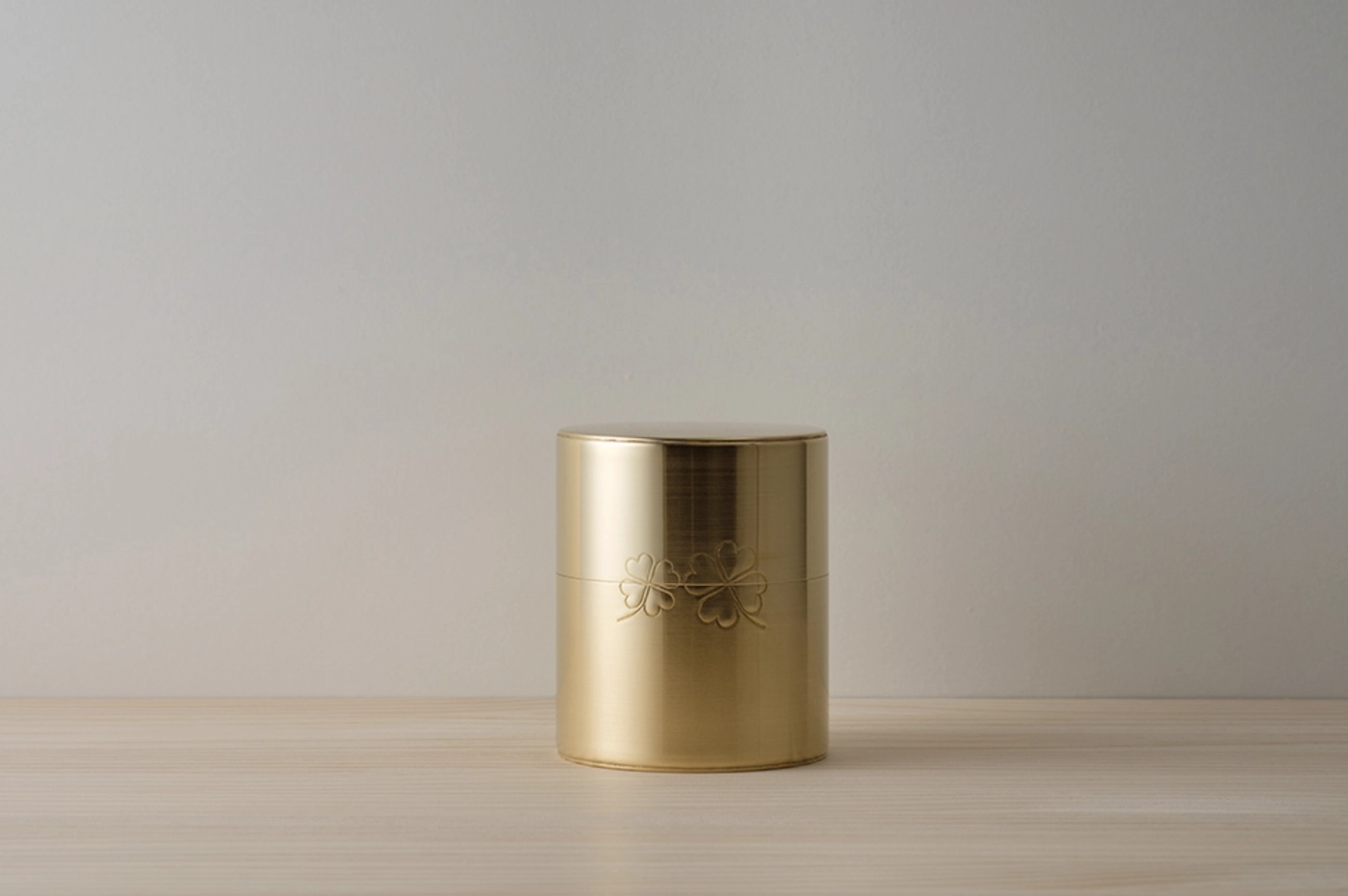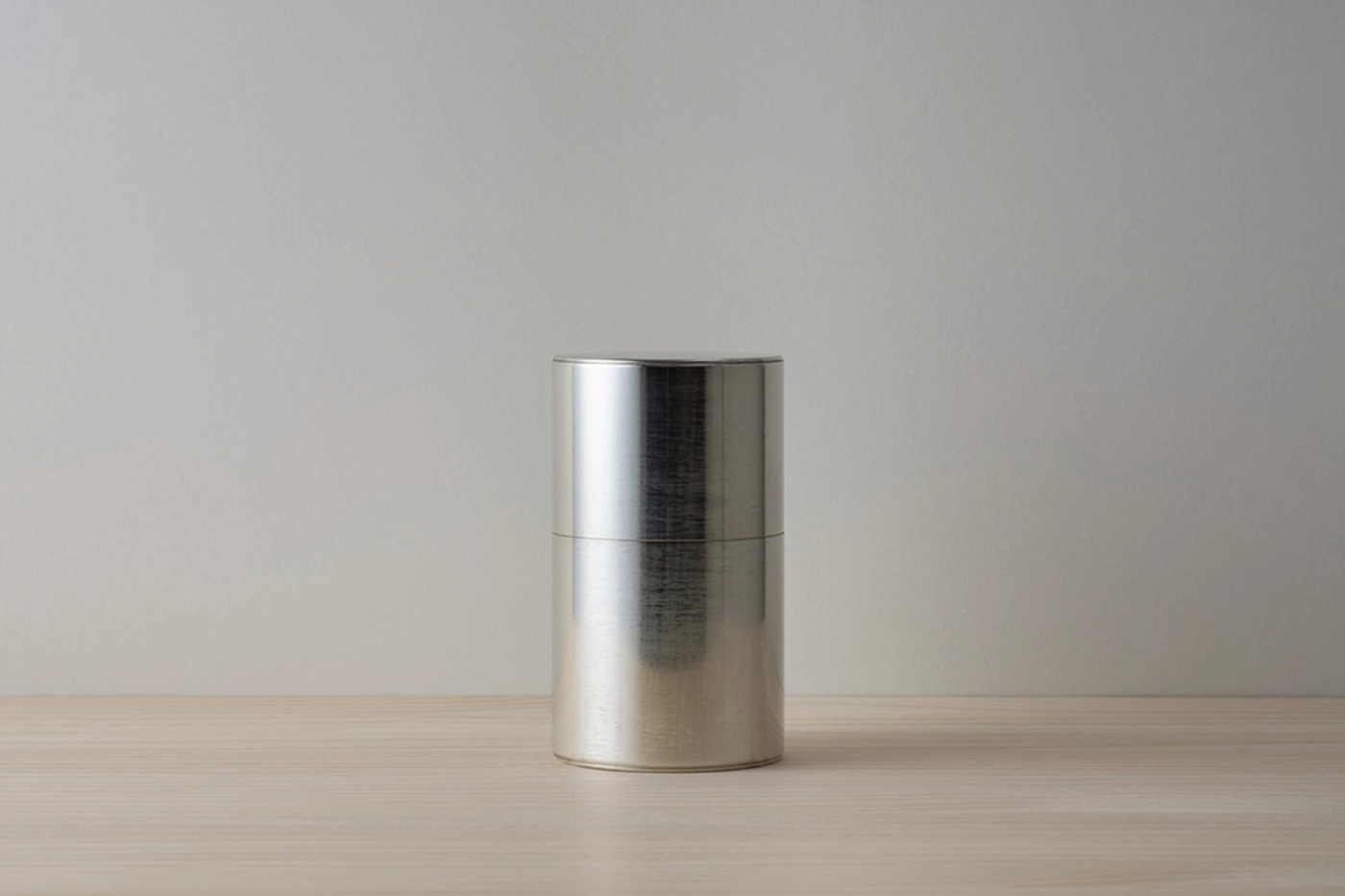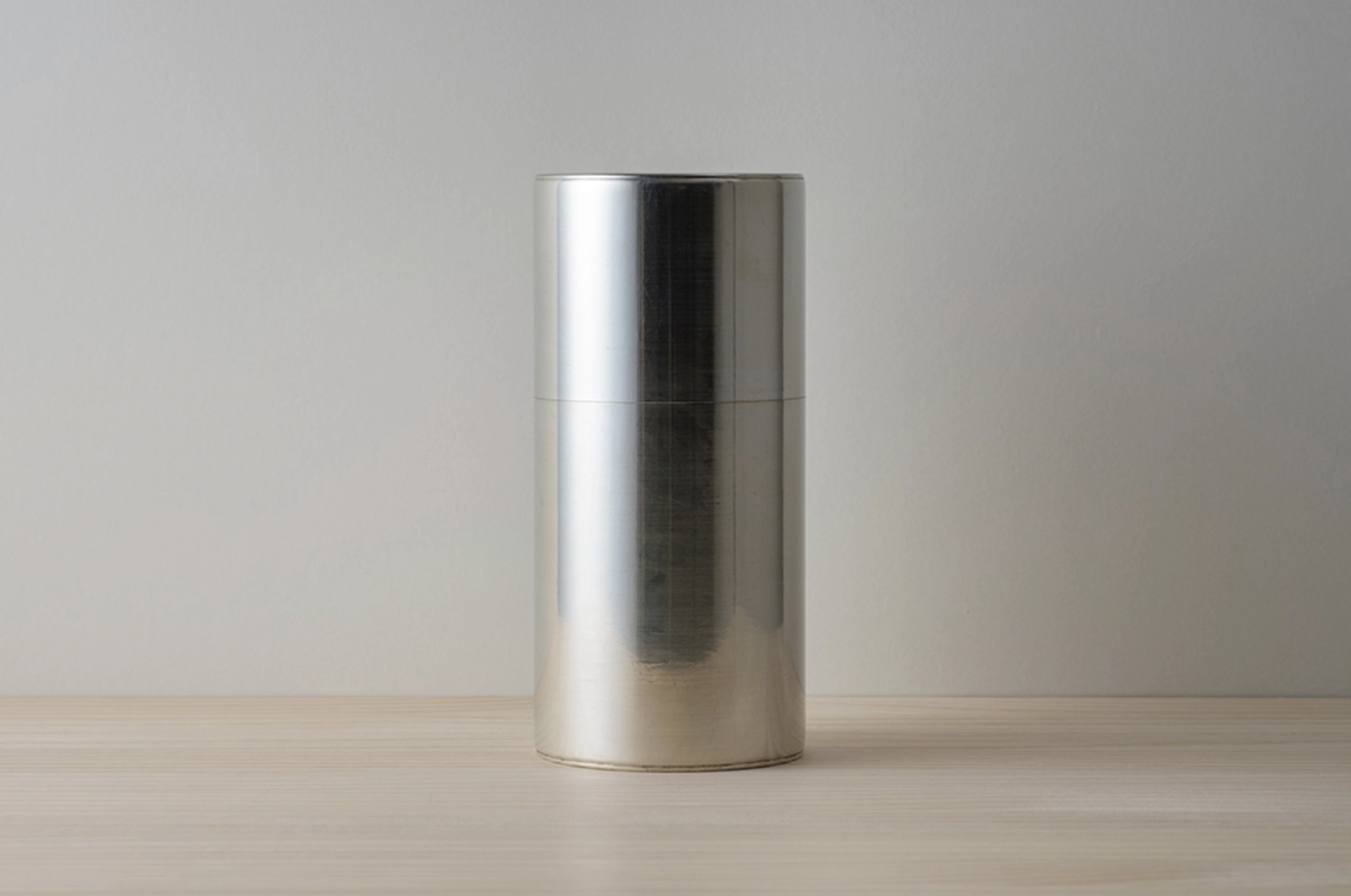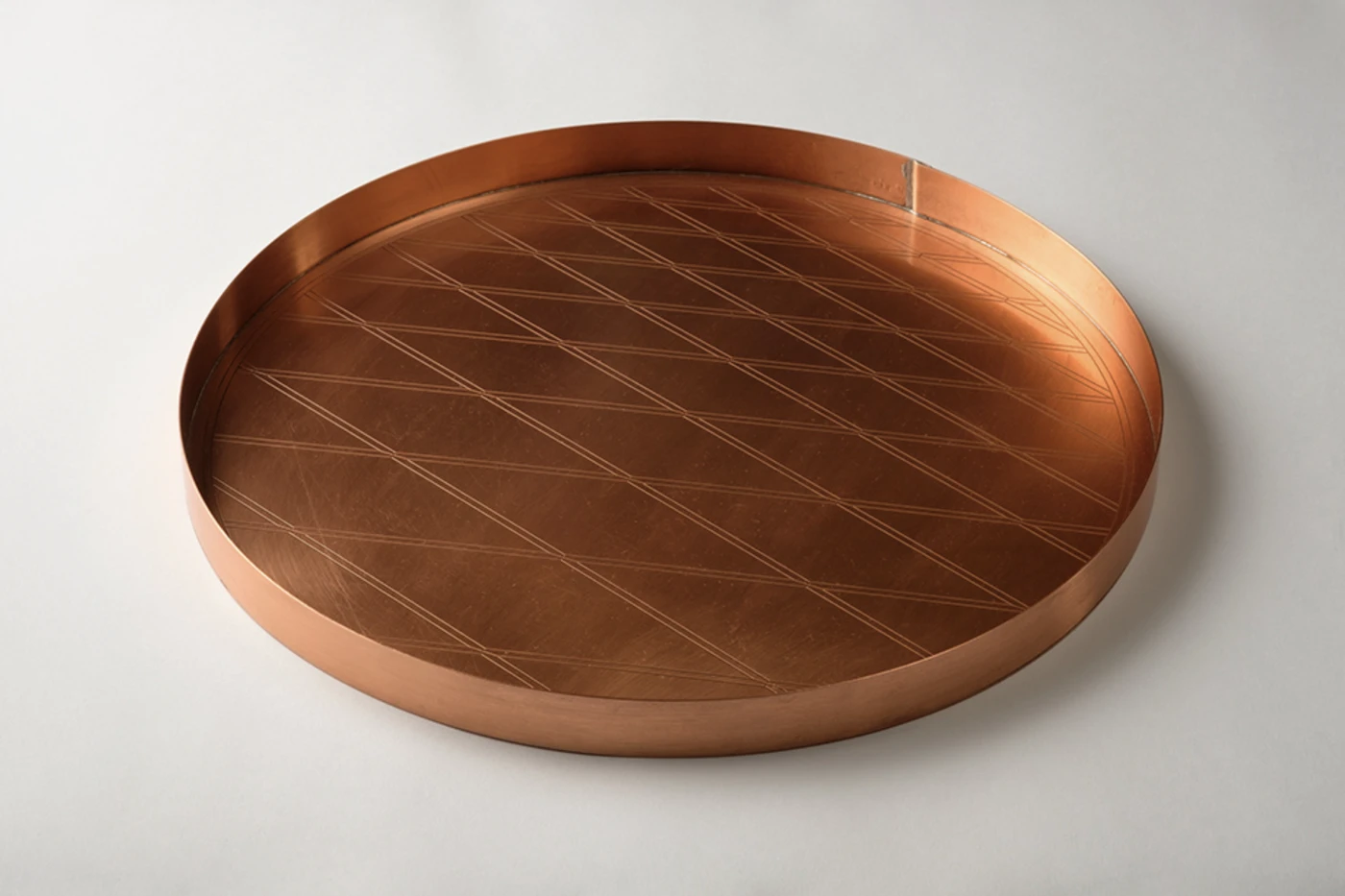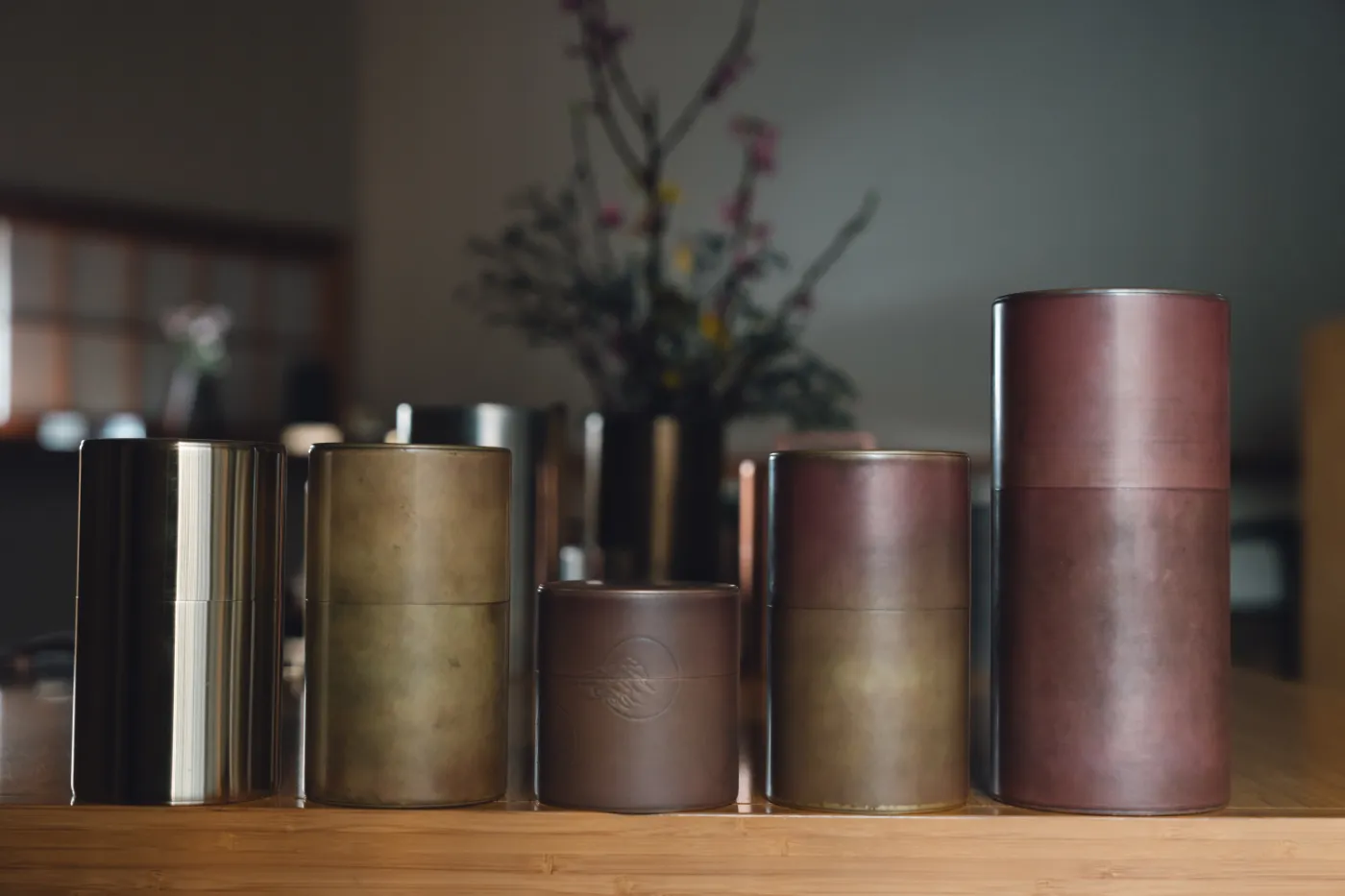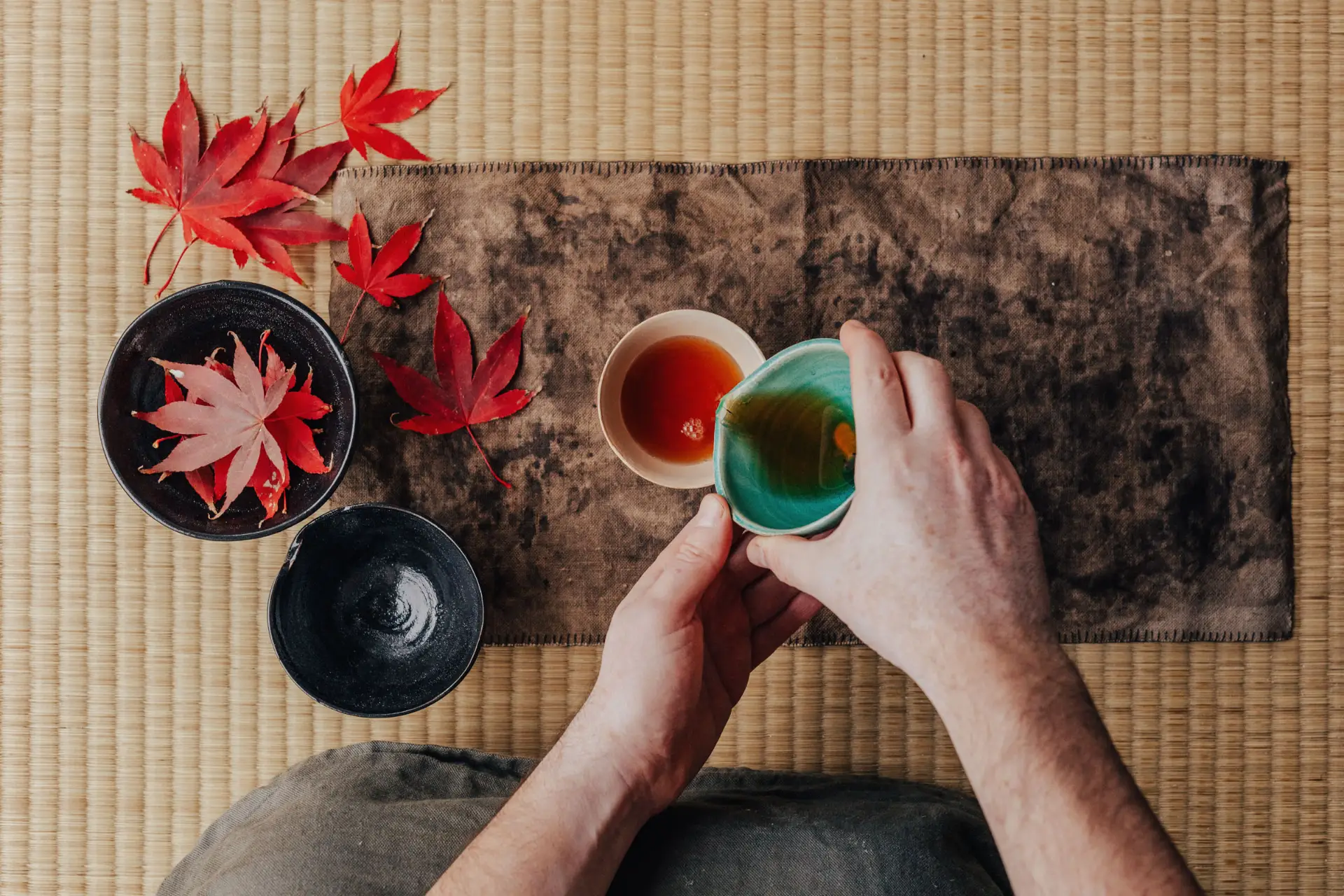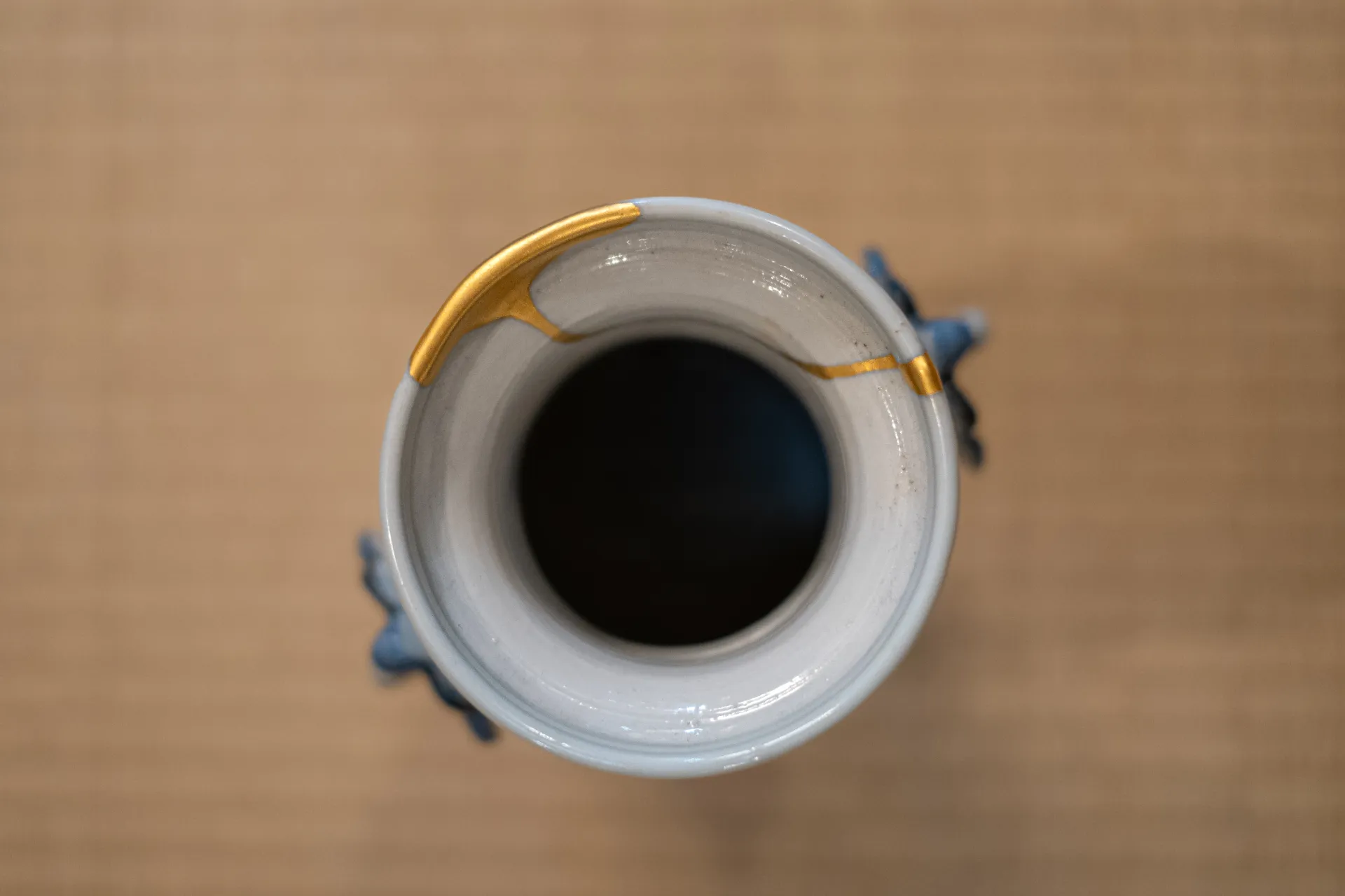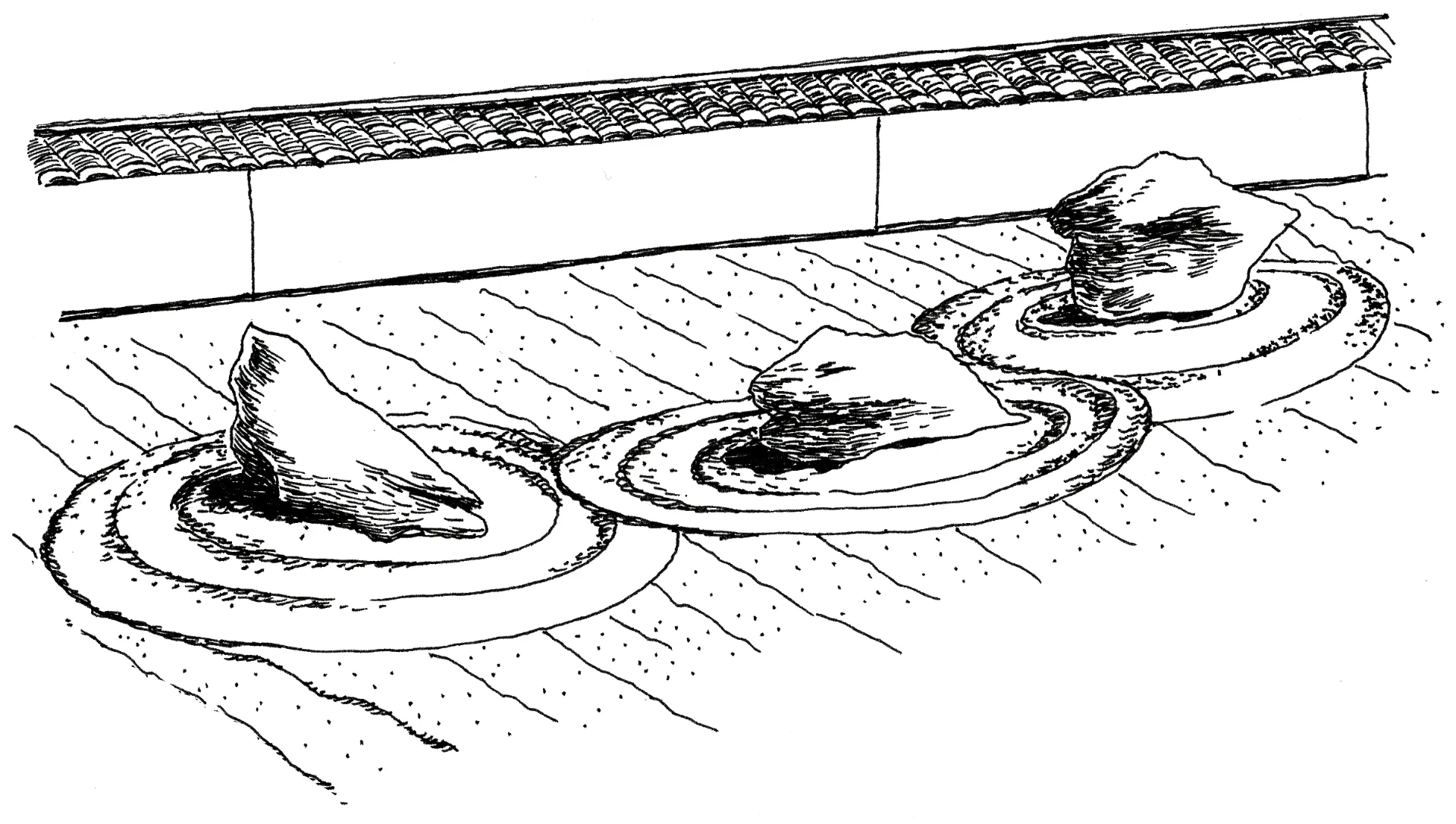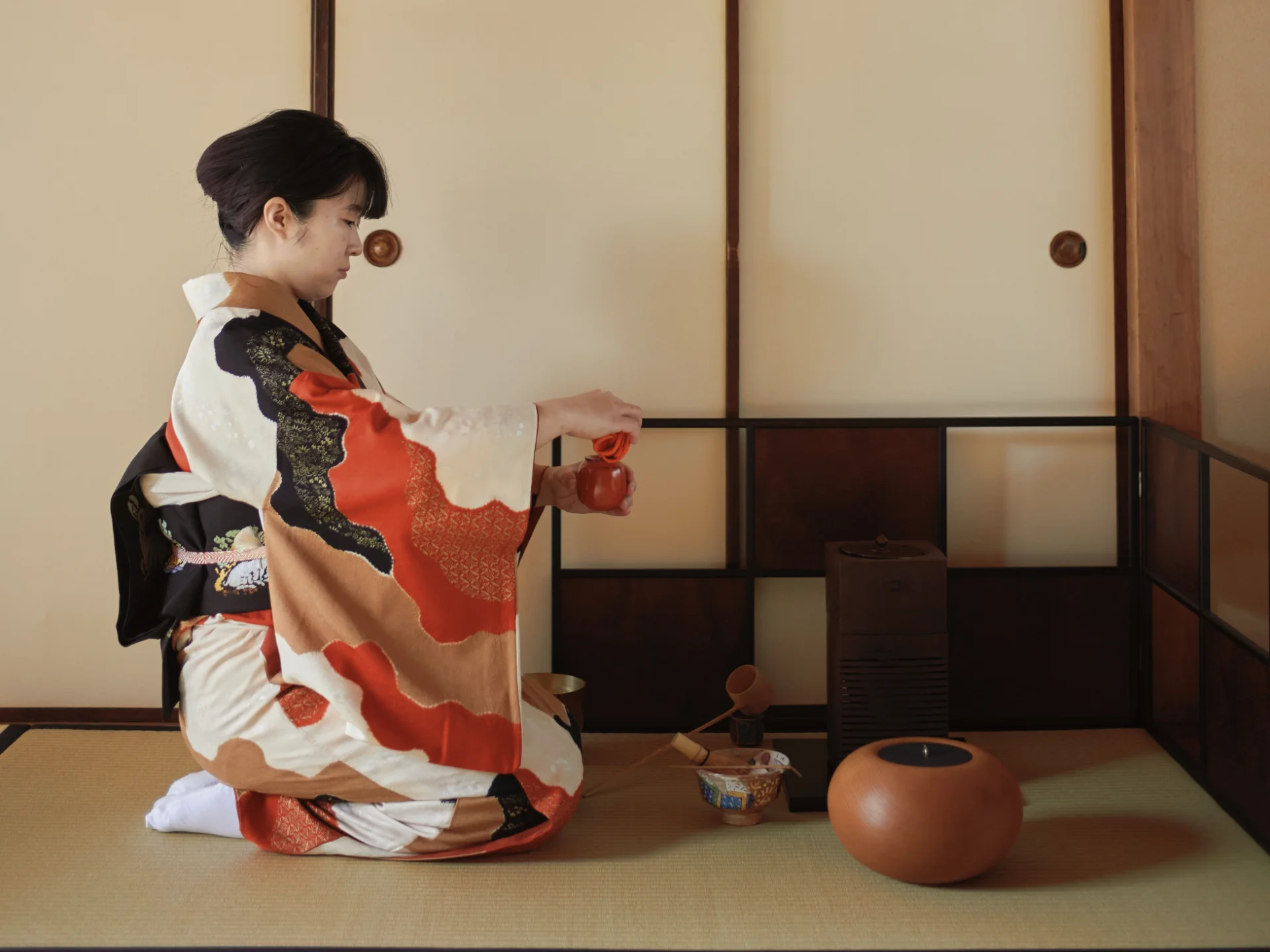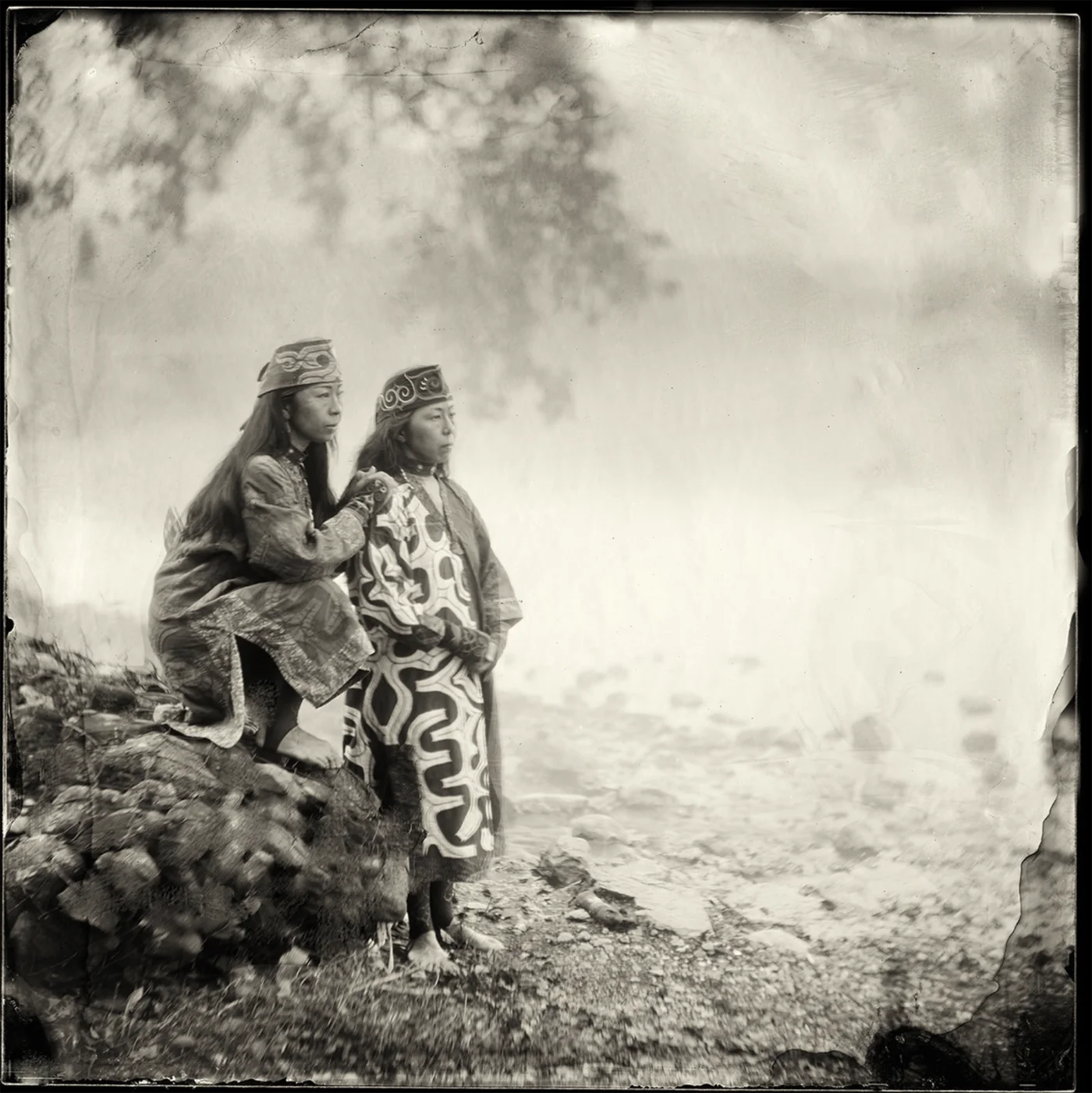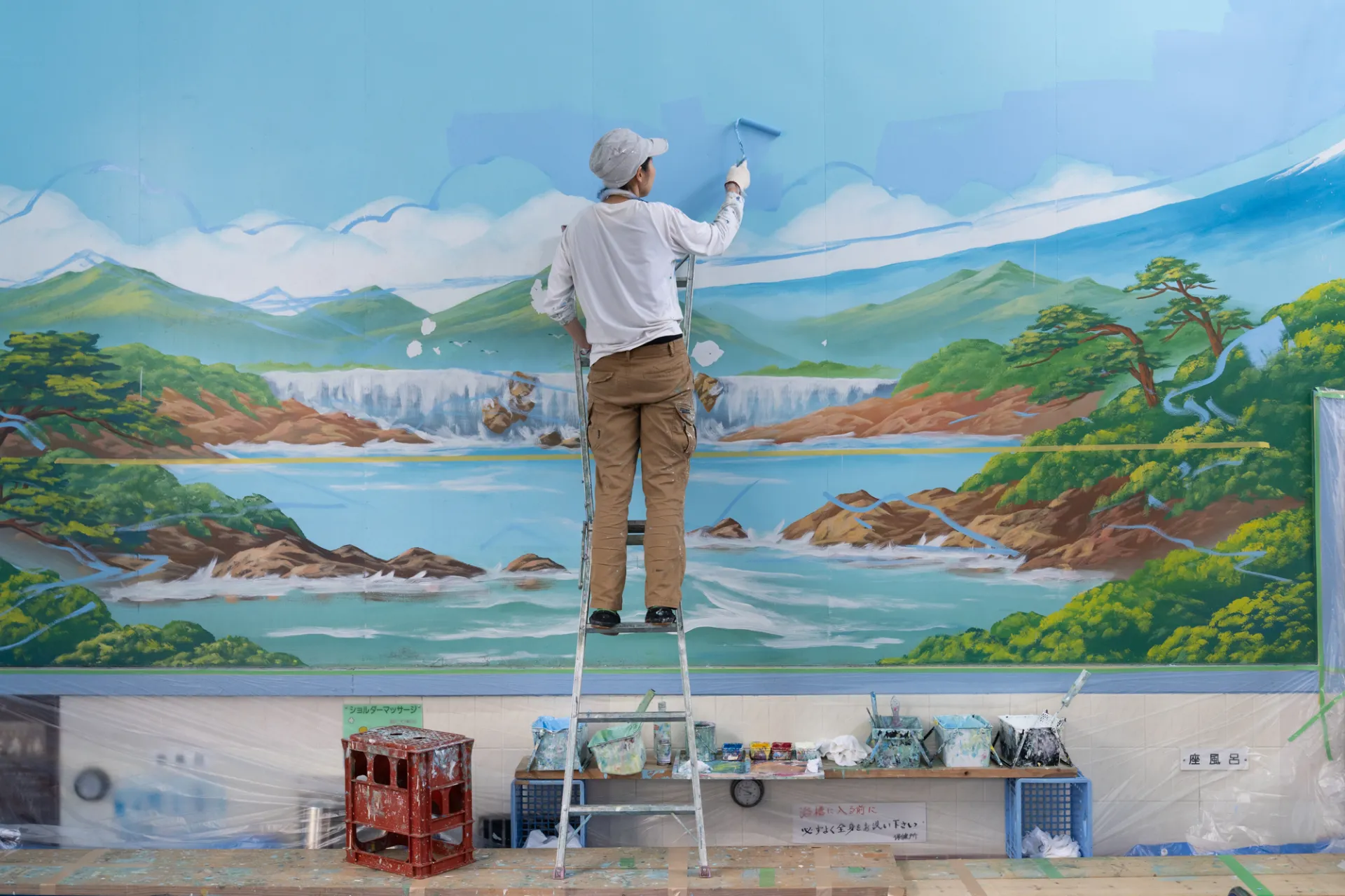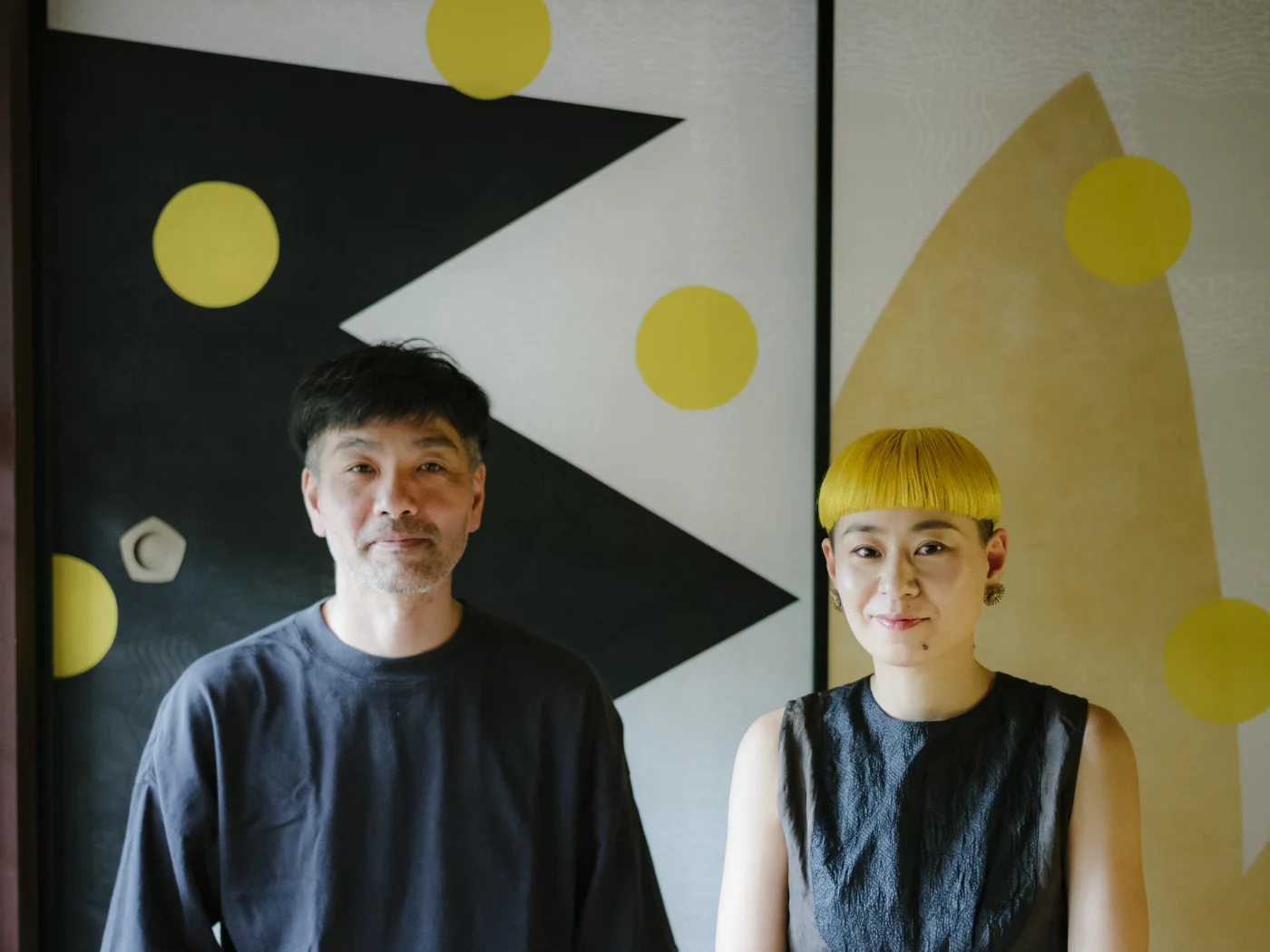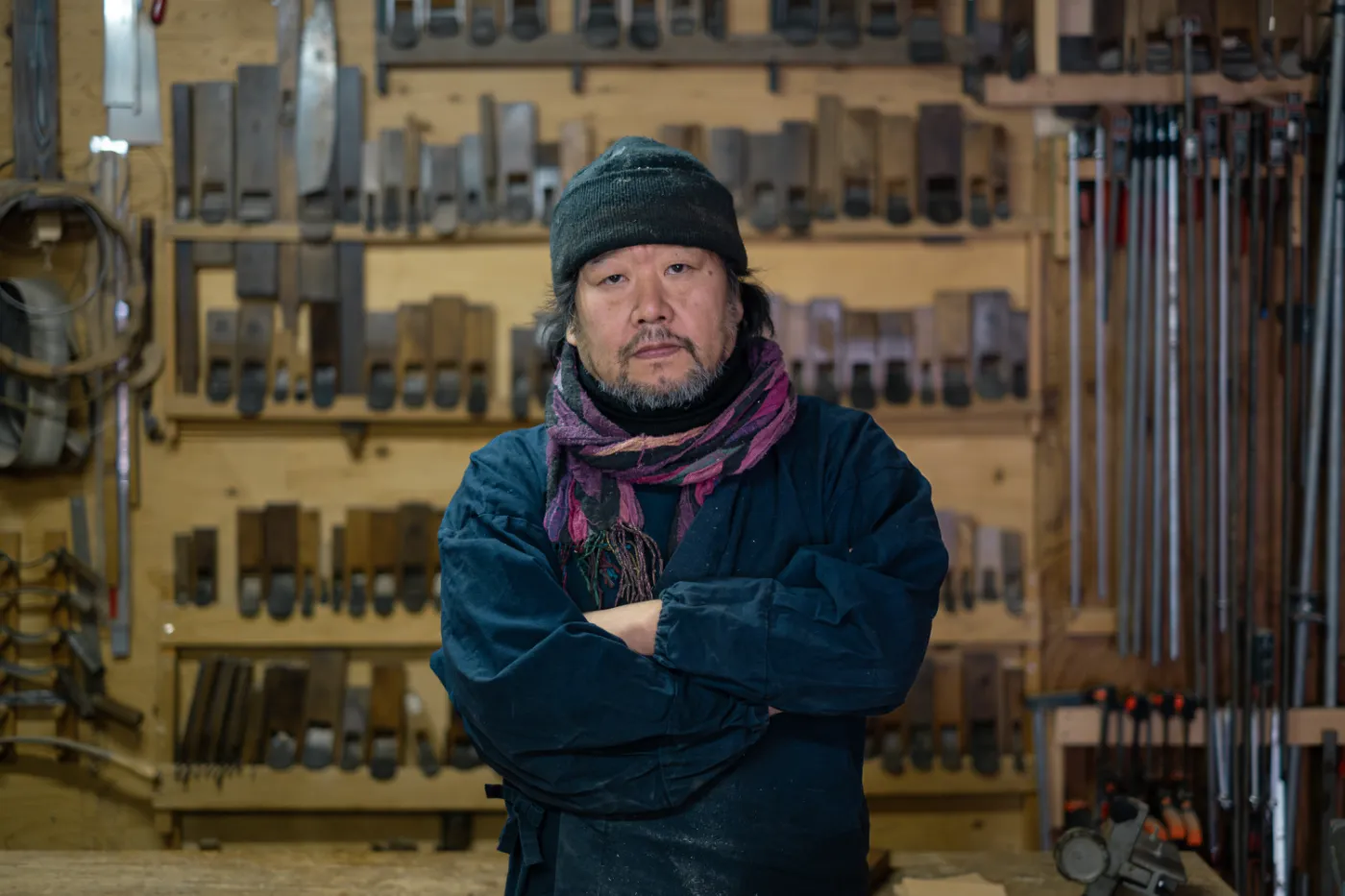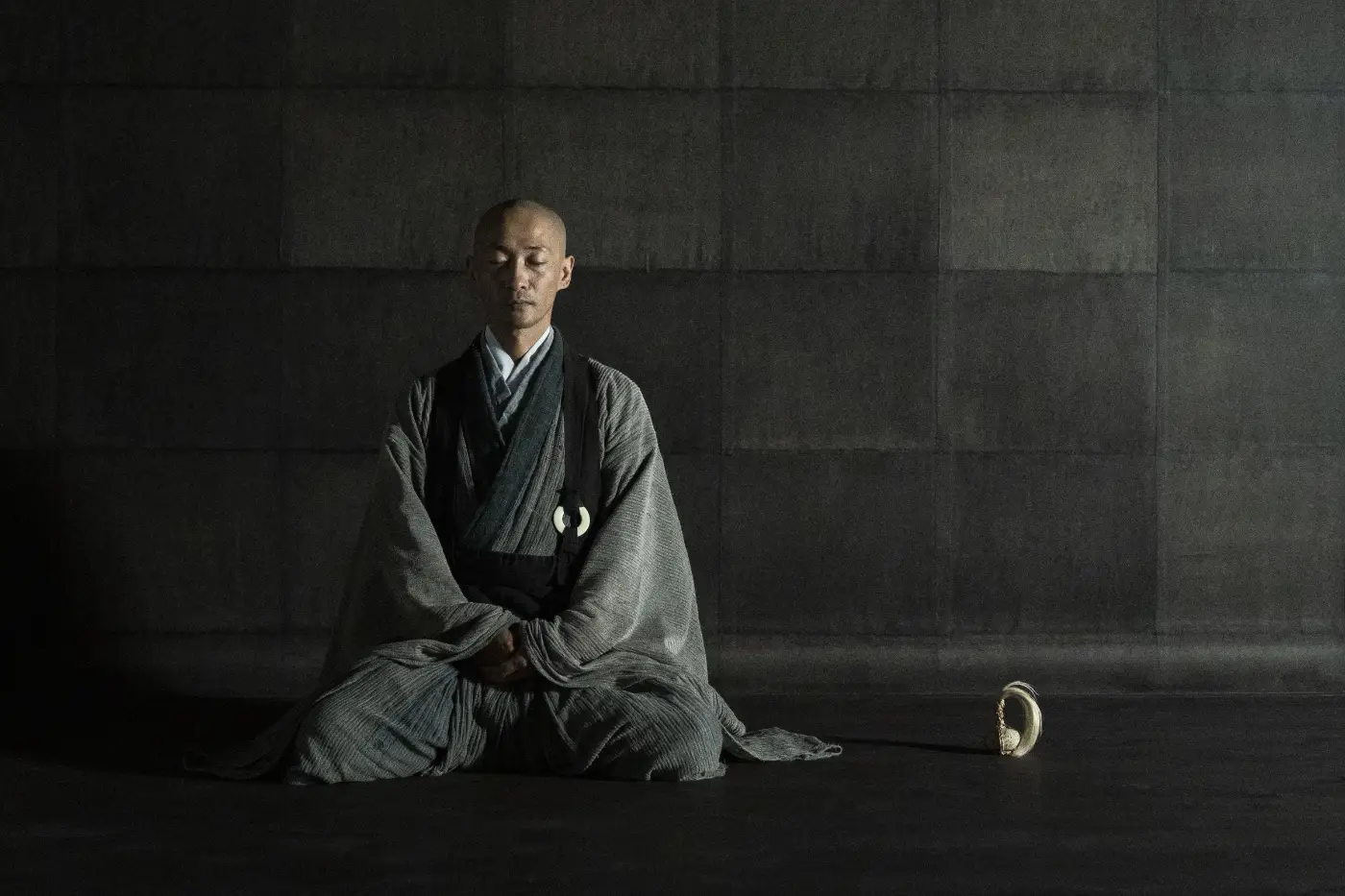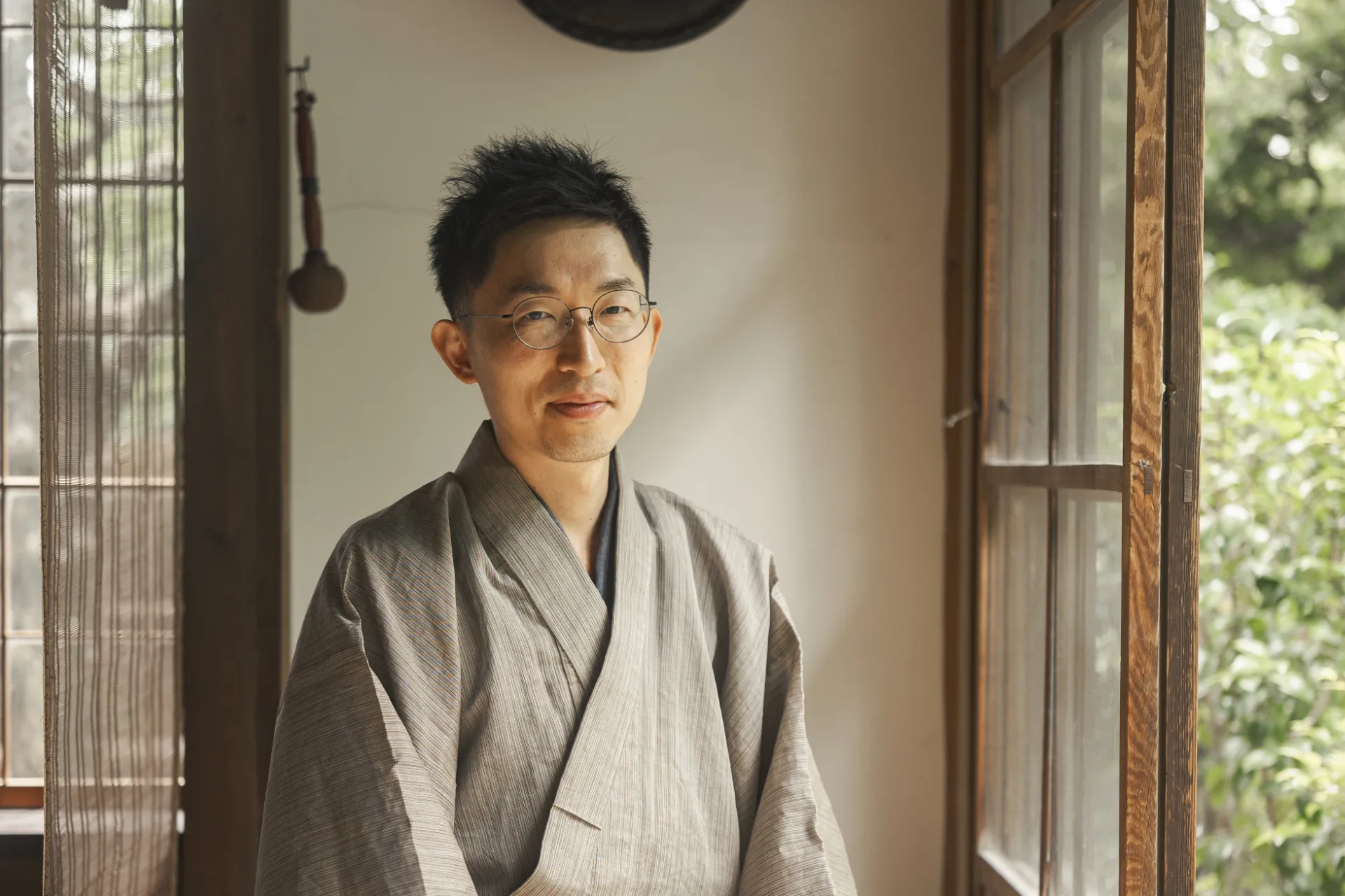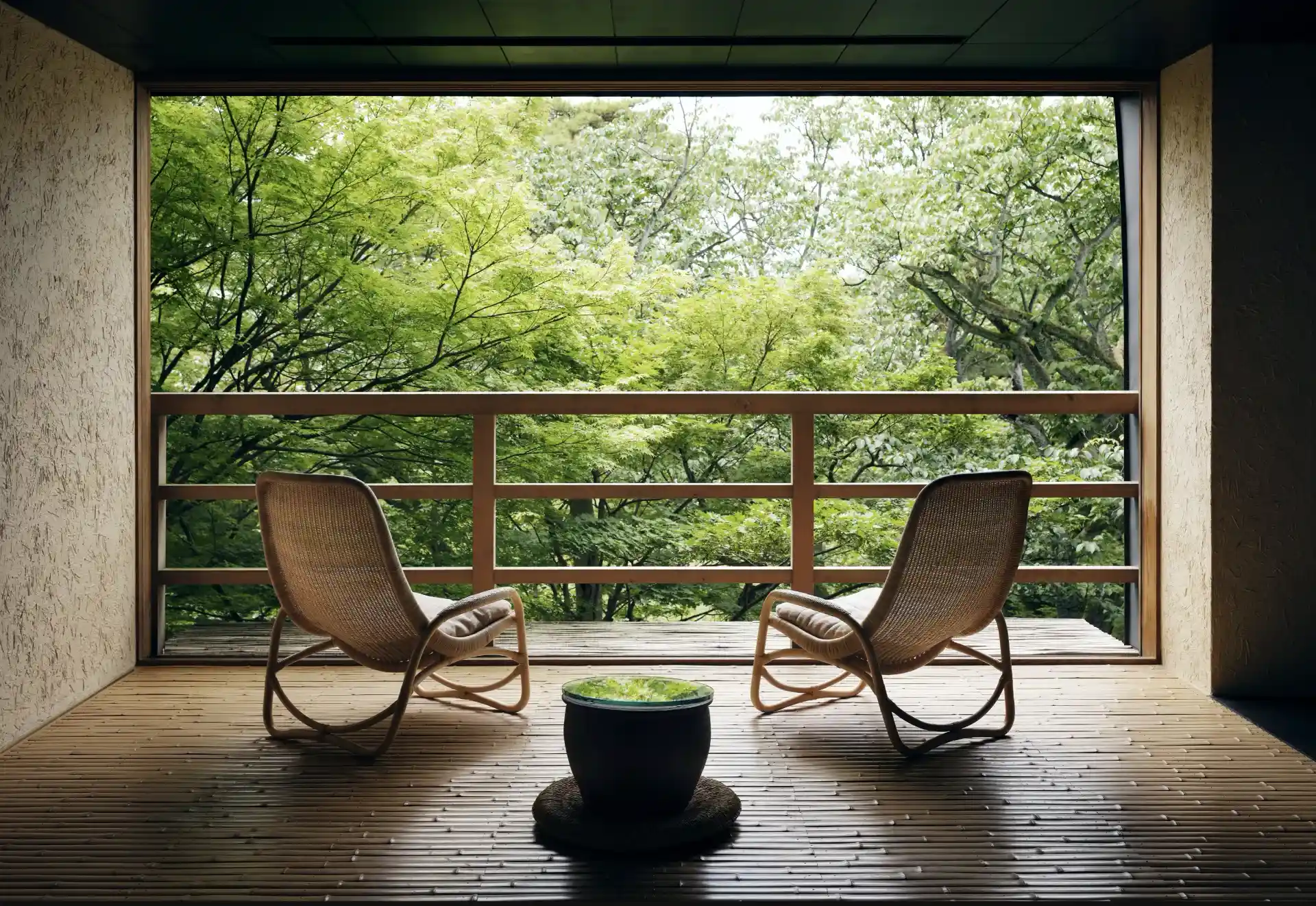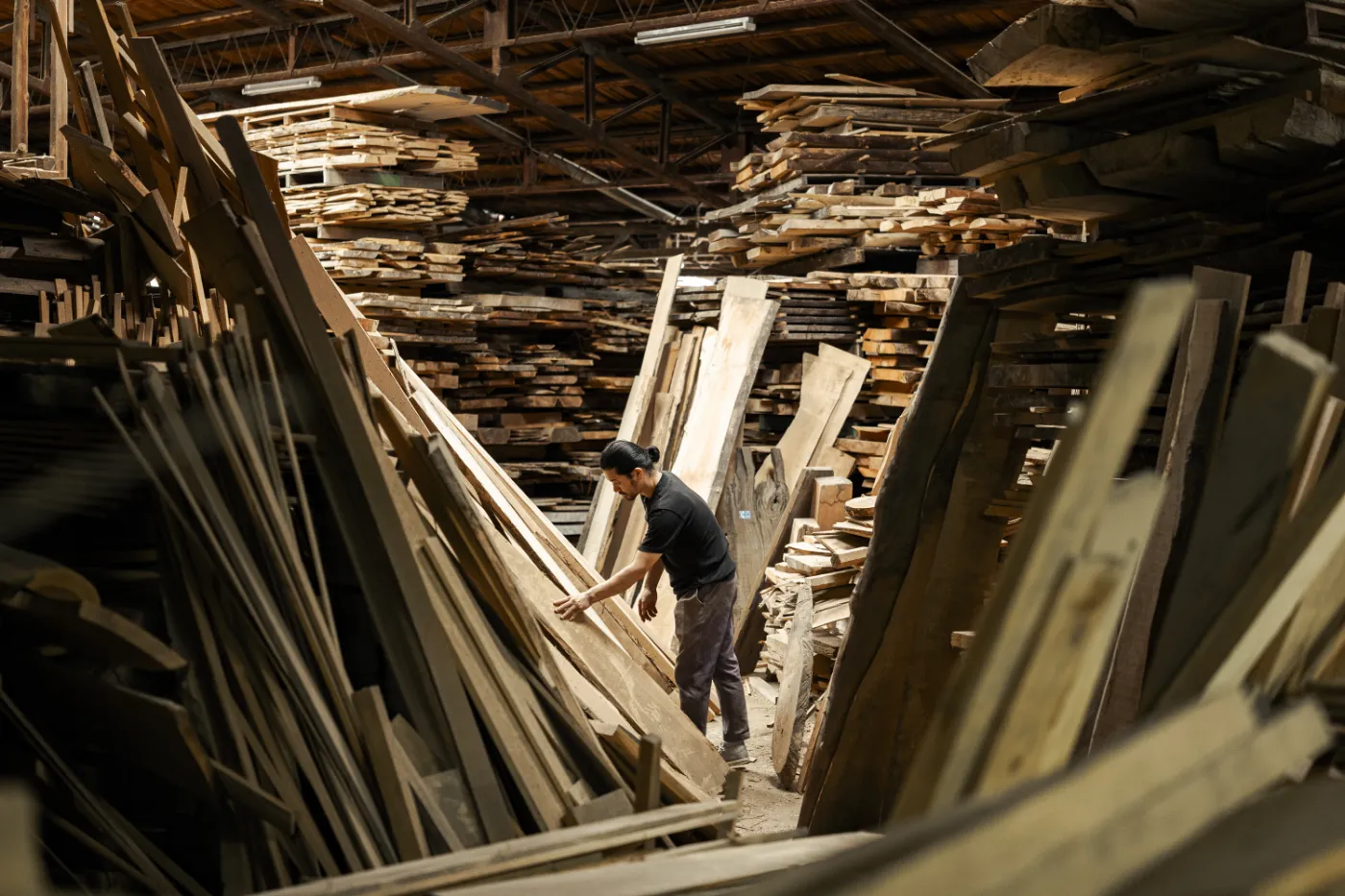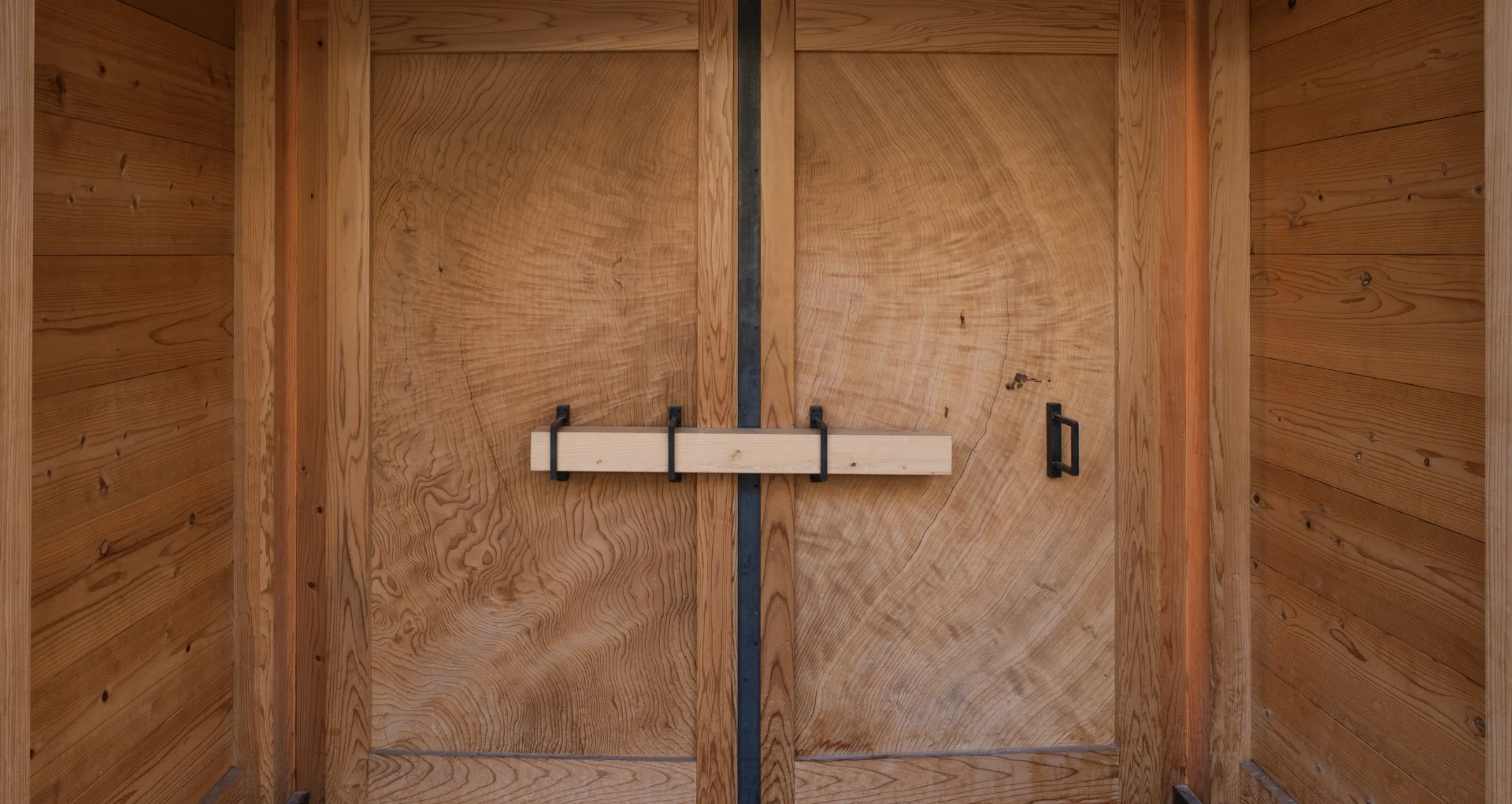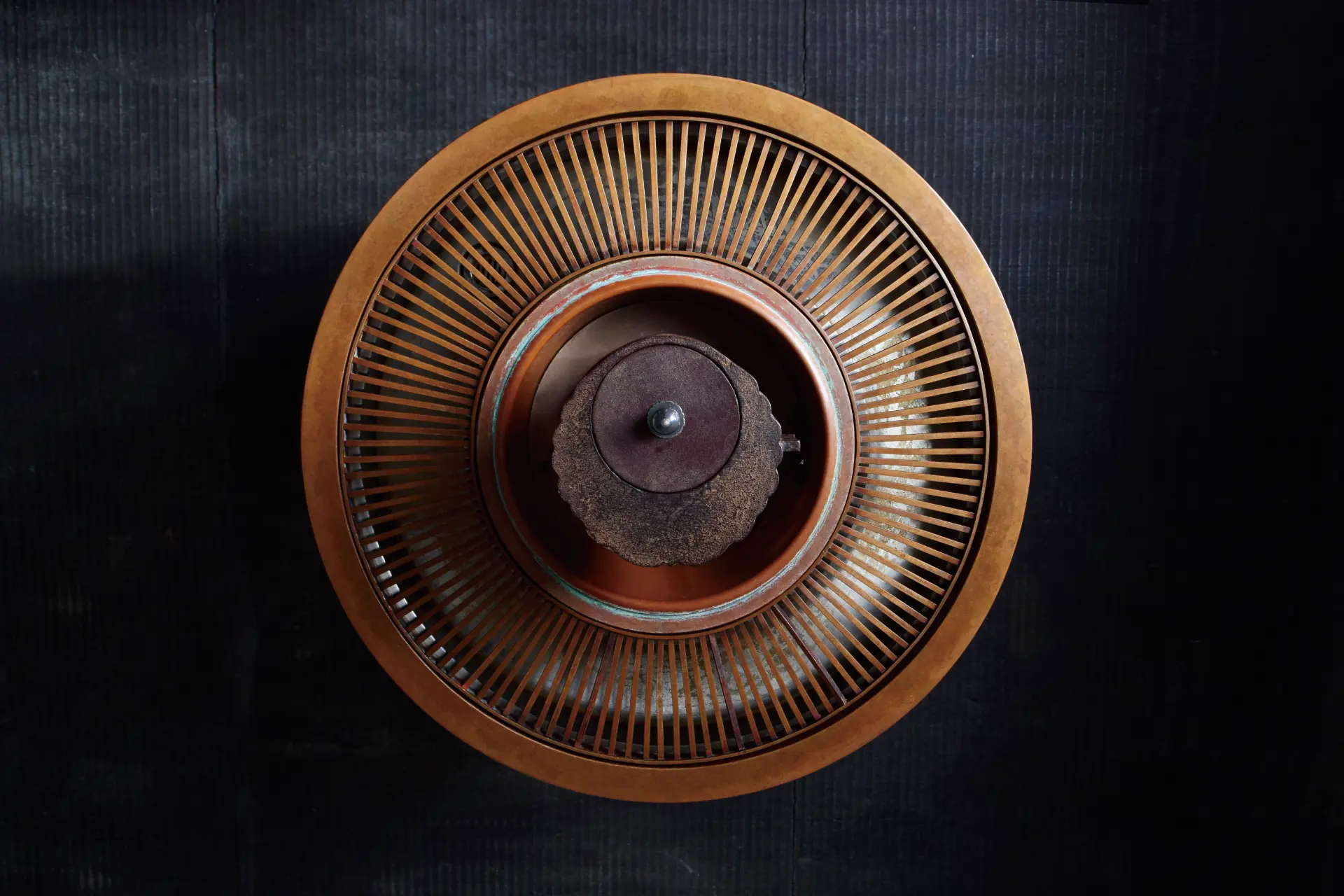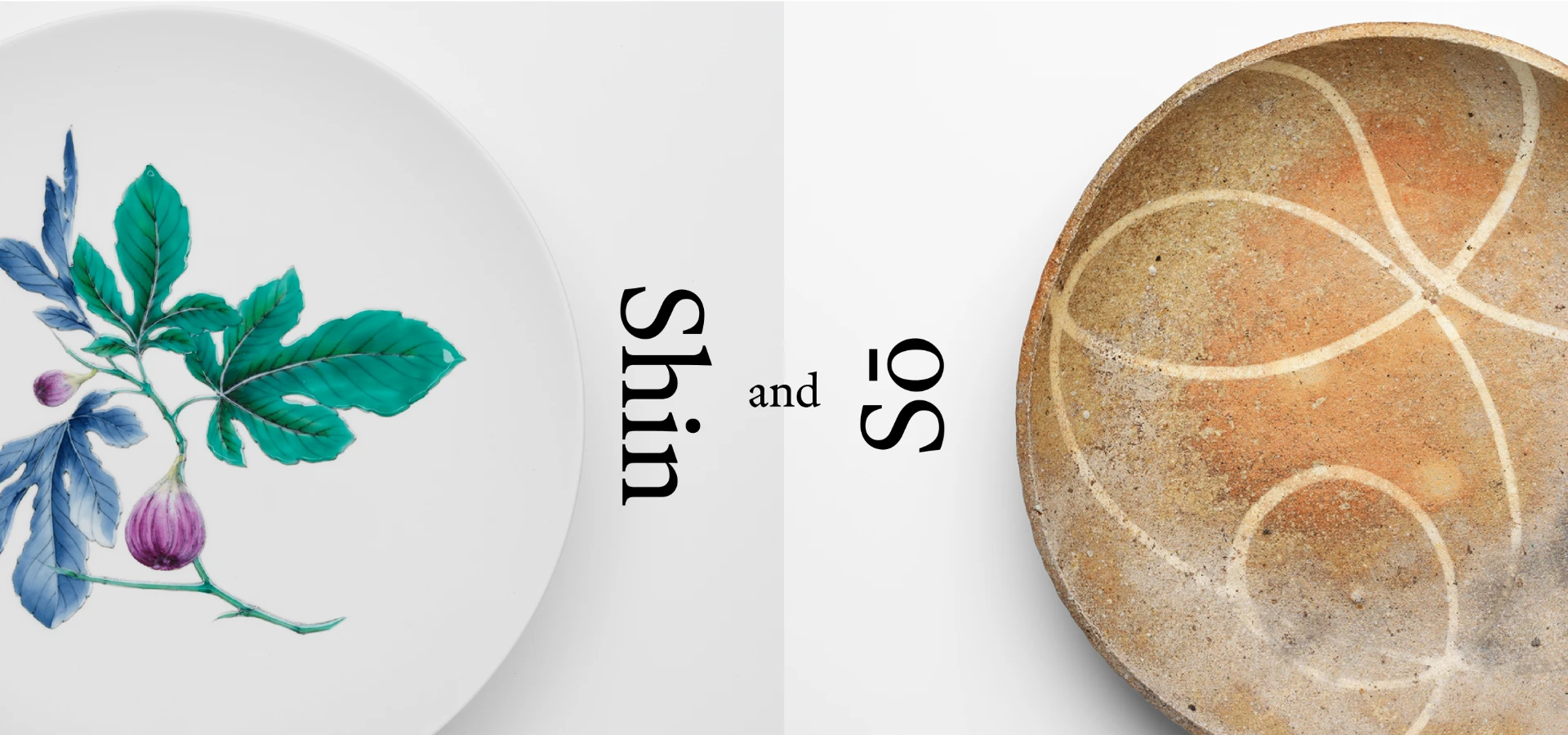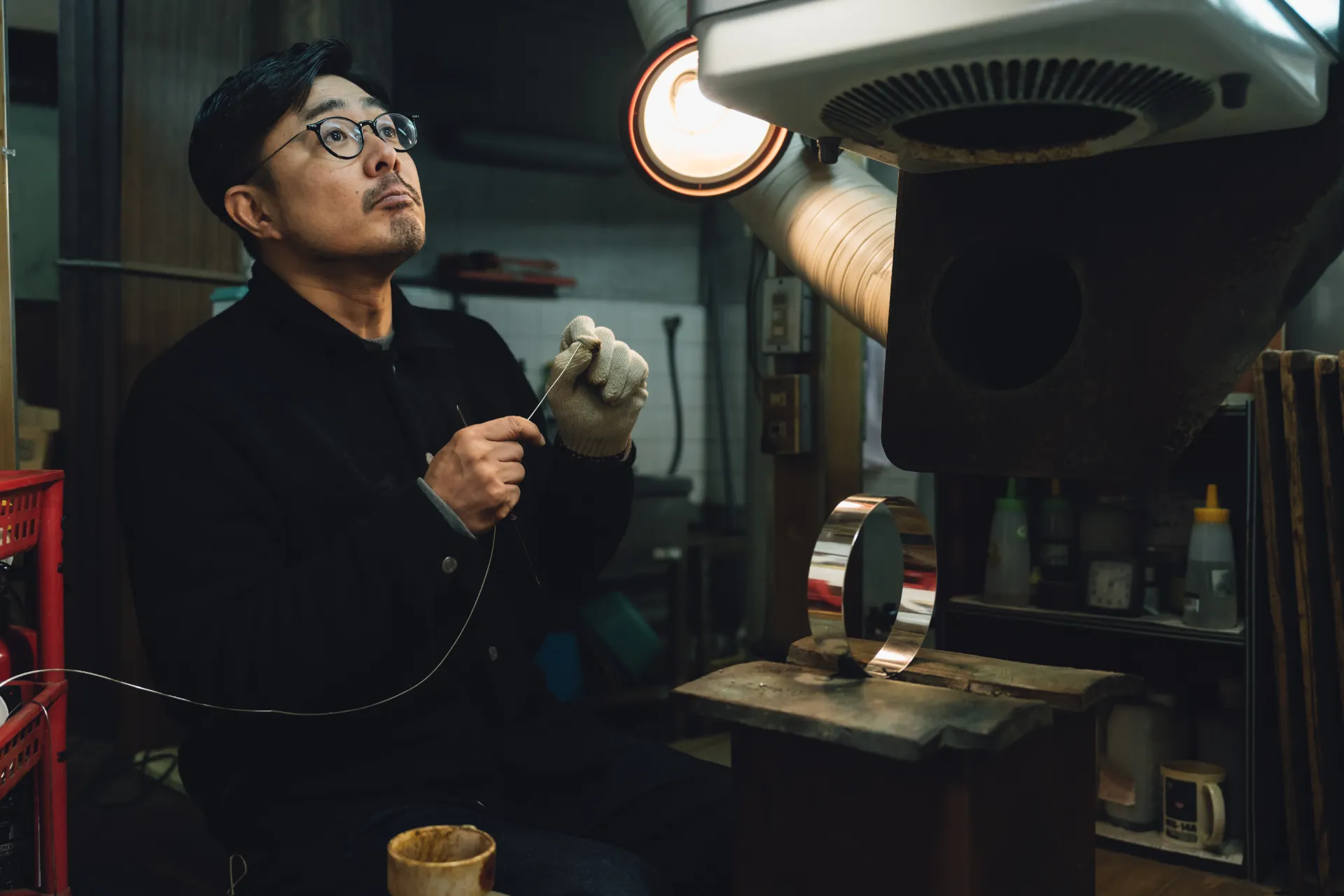
Balancing Continuity & Innovation
As the current head of Kaikado, how do you hold the balance between continuity and innovation?
Takahiro: In Kaikado, people bring back 100-year-old tea containers to us so we can fix or adjust them so they can be used again. We can fix those anytime, because we never change the size or technique from 150 years ago.
In our workshop there are 10 kinds of molds for the fixed radius (width) of each container. So you have this limitation of how wide the size of the container is. The tradition you have to stick to to safeguard continuity.
But within that restriction there are actually so many varieties of things that we have been making. That’s the innovation part. That you can just play with the mold that’s already there.
For example, if we change the height of a tea caddy, it changes the meaning. If we make them shorter, people can easily use them for storing things when they go traveling. If it is a long one, people can use it for storing spaghetti. So just by changing the height, it changes the meaning. In this way, we are adjusting to this era.
So when I think of Kaikado and this balance between continuity and innovation, I have an image that’s in my mind.
What image is that?
It’s an image of 150 tea containers in a single line. Each container represents a year of our history. Out of that single line of tea containers, we jump right and left with very small movements. The power of this small movement makes the line of Kaikado longer, little by little.
Some people ask me what is a small movement. It’s a new thing, like the spaghetti caddy, a coffee caddy, a speaker. Also, we have a Kaikado café. This kind of small movement is important to stay relevant and safeguard continuity through small innovations.
But if we see this small movement from a distance, it looks like a single line, so it looks very conservative. But actually, if you get closer, we have very different movements.
This is how we balance continuity and innovation.
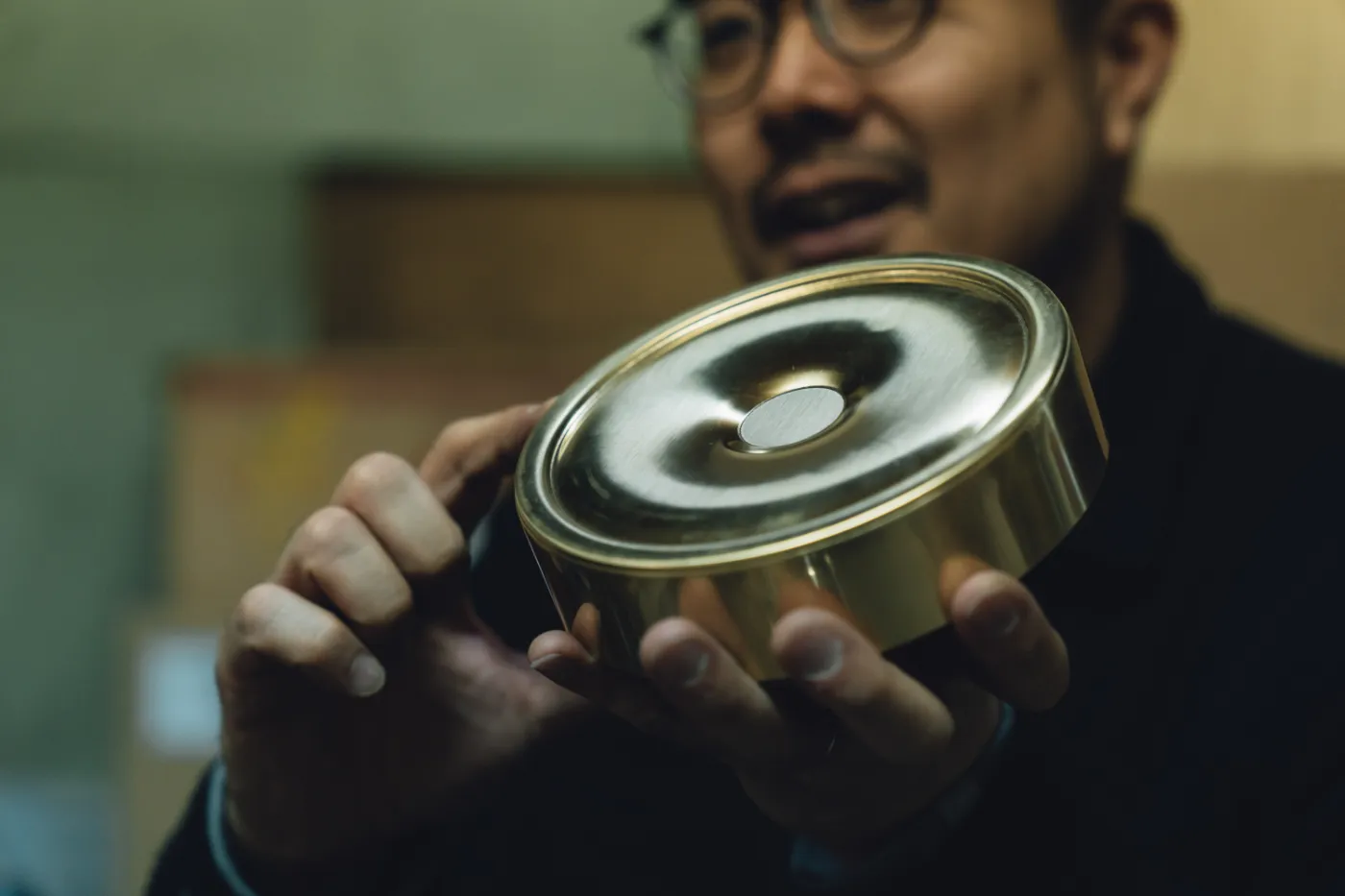
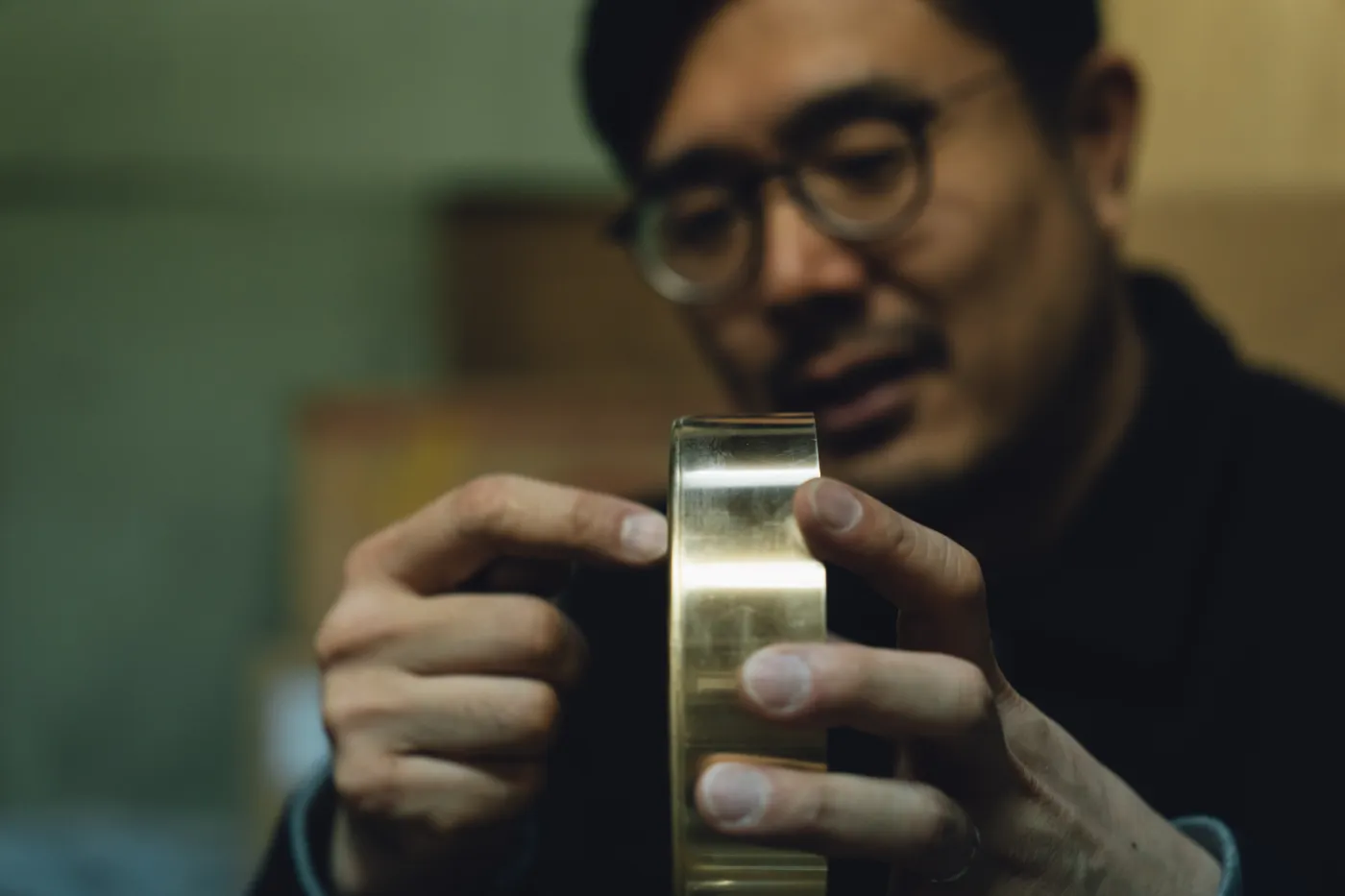
Hard Times
There have been two moments where the continuity of your company was a bit unsure. Once during World War II, and once when you had to decide to take over or not.
Could you share a bit about both times?
In my grandfather’s generation, it was quite a hard time. It was World War II and, actually, we couldn’t maintain our company for several years. Our government stopped us from making tea caddies because of the material.
That’s why, at that time, we ran the pharmacy in our house. But behind, actually, my grandfather continued making tea caddies.
One day, the government employees found my grandfather making it and he was arrested. Also, the government asked him to pass over all the iron tools in order to make the weapons, but my grandfather hid half of it under the ground and passed the other half on to our government.
Due to his cleverness and disobedience Kaikado could continue.
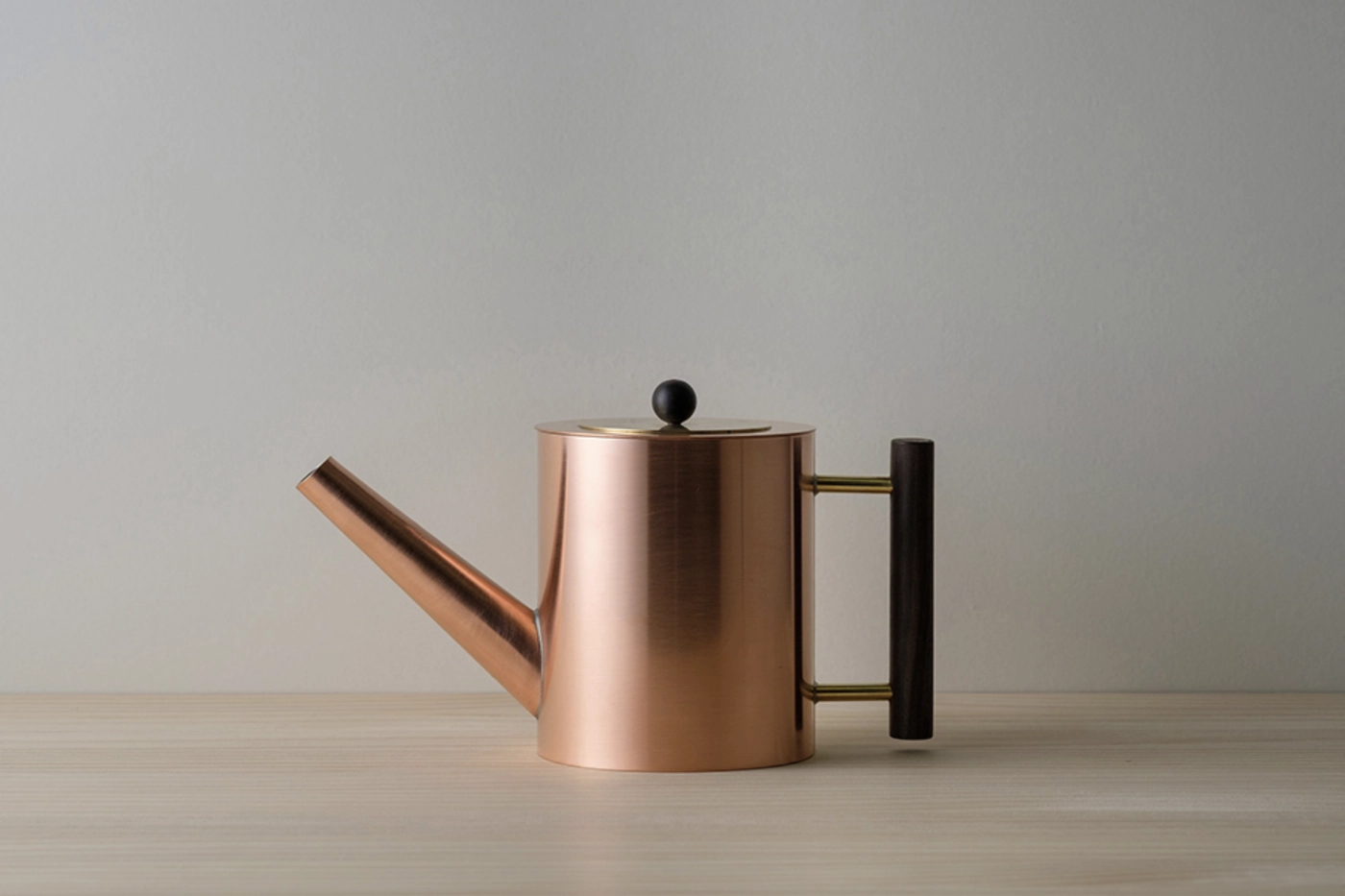
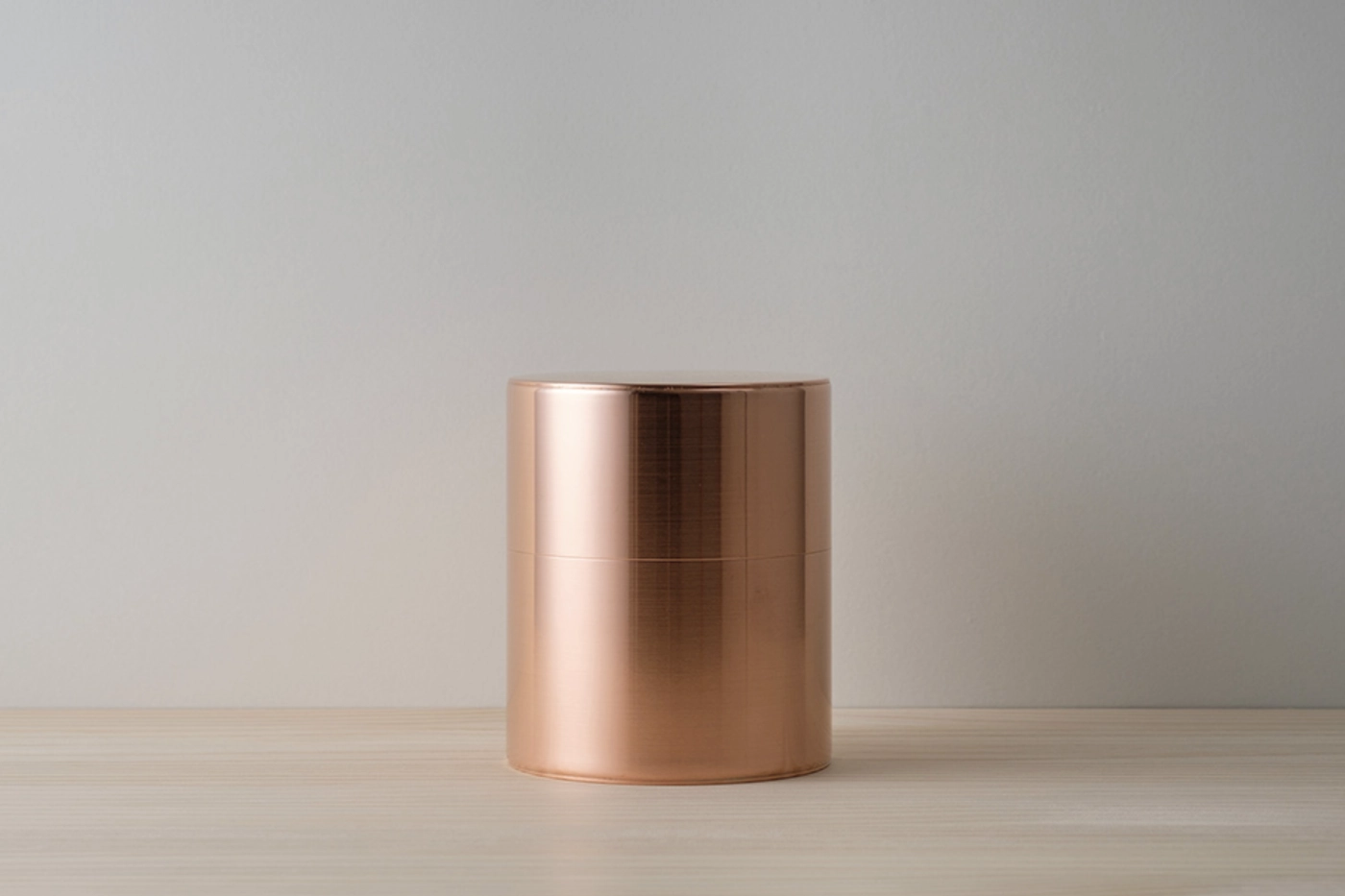
“You Are Crazy!”
Then when you wanted to enter and continue the company 25 years ago your father was resistant, right?
Yes, when I was thinking about my career during university, he asked me to go away from this business because he thought traditional handicrafts were going extinct soon.
At the time, my father was kind of the master of my family, so that’s the only way or only good way to think about my life. So, I began working for another company selling products.
But since I was a child, I was always coming back to the workshop after kindergarten. I sat and played with my grandfather in the workshop. I watched the people making something. That feeling was always in my mind.
Then one day, a lady from the US bought a tea caddy from me when I was working in my previous company. I asked her, “What are you going to use it for?”
She said, “I want to use it in my kitchen as a container.”
That moment changed my life. I could see my tea caddy fitting into another country’s culture. It was then that I thought we could sell to the whole world.
So I decided to come back and I told my father, “Let’s sell to the world.”
He said, “You are crazy! This is a Japanese tea container. People who live in a foreign country will not understand this.” That was his feeling, but for me, it was different.
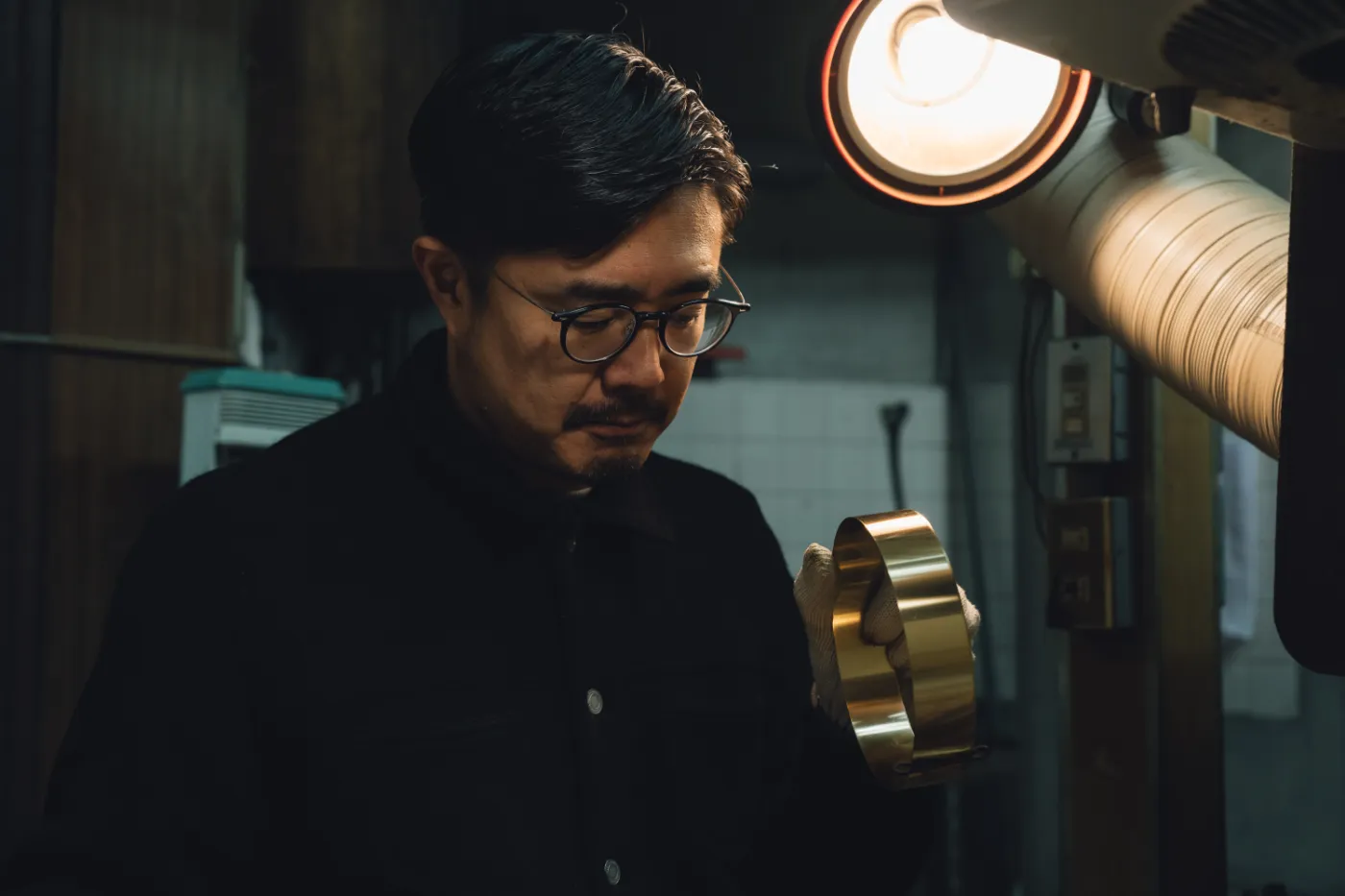
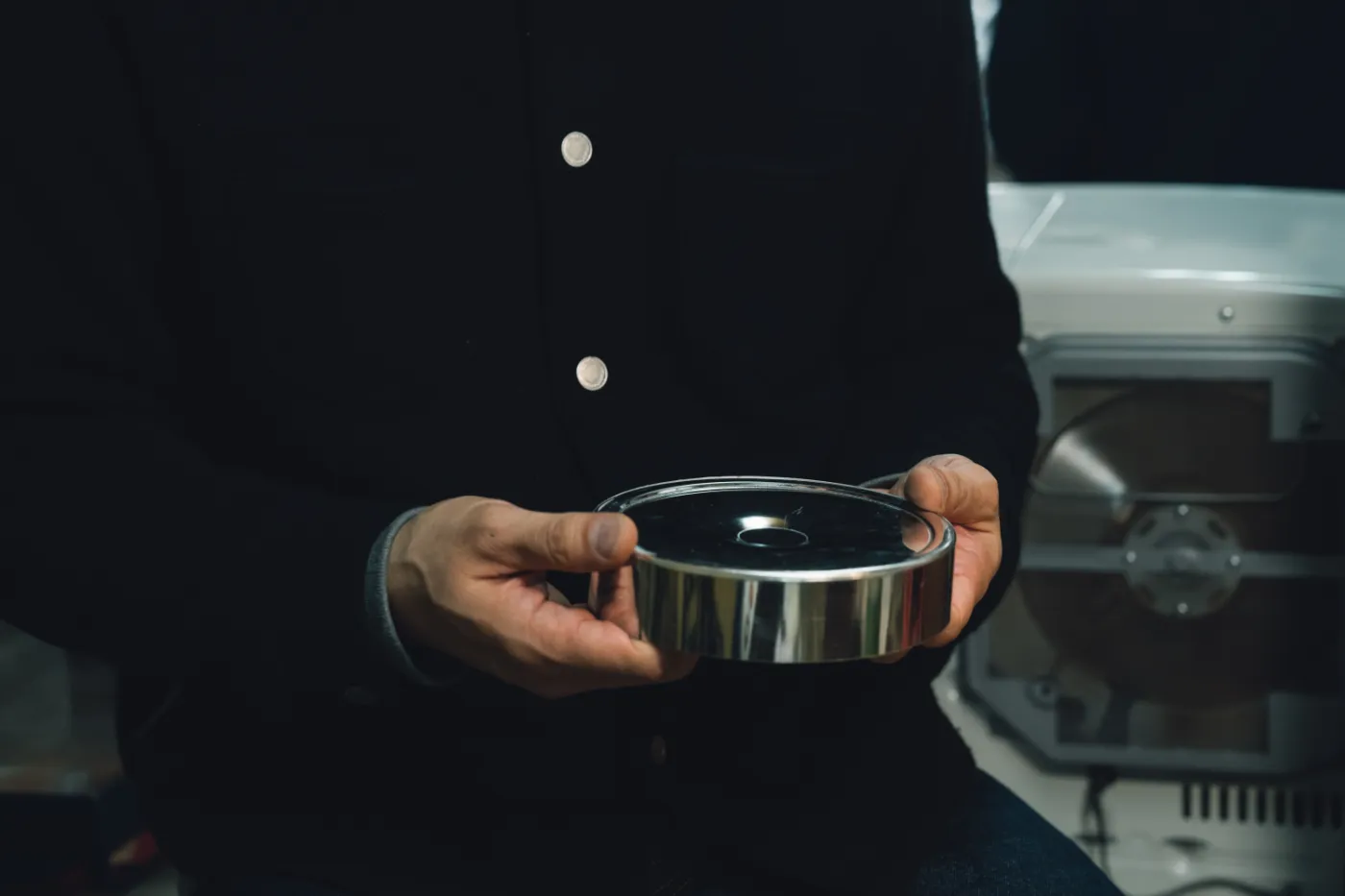
Embodying Kaikadoness
You were certainly right about your feelings. By making those small steps of innovation, Kaikado has become a recognized brand all over the world. Often collaborating with other designers, craftspeople and brands, while maintaining a family feel.
How did you learn the craft from your father?
He would never teach me directly. He asked me to watch and learn how to make the caddy through observation. But he would teach another younger craftsman. At the time, I didn’t know why.
But after 25 years, I can now see that if he teaches me precisely how to make the caddy, I can only learn how to make the caddy. I would have never learned what Kaikadoness is, what is the true and deepest essence of Kaikado.
In Japanese we call this essential quality that is at the core of something ‘rashisa’. It is difficult to translate into English.
Because he never taught me, I stepped forward and tried to find out what he was doing. That’s why I can learn what is Kaikadoness, what is Kaikado essence, Kaikado atmosphere.
Did he at least tell you whether what you were doing was good or bad?
If it’s no, he would tell me no. If it’s yes, he would never say anything, just walk away. [laughs]
Because I was not taught through words and explanations, I had to learn through all my senses and my own feelings. This way of learning through observation and attunement may take longer, but the learning goes much deeper.
Through it you come to embody the very essence of something, which then over time allows you to go beyond the traditional forms and take the innovative side steps we talked about, while still staying true to the essence of a thing. In my case Kaikadoness.
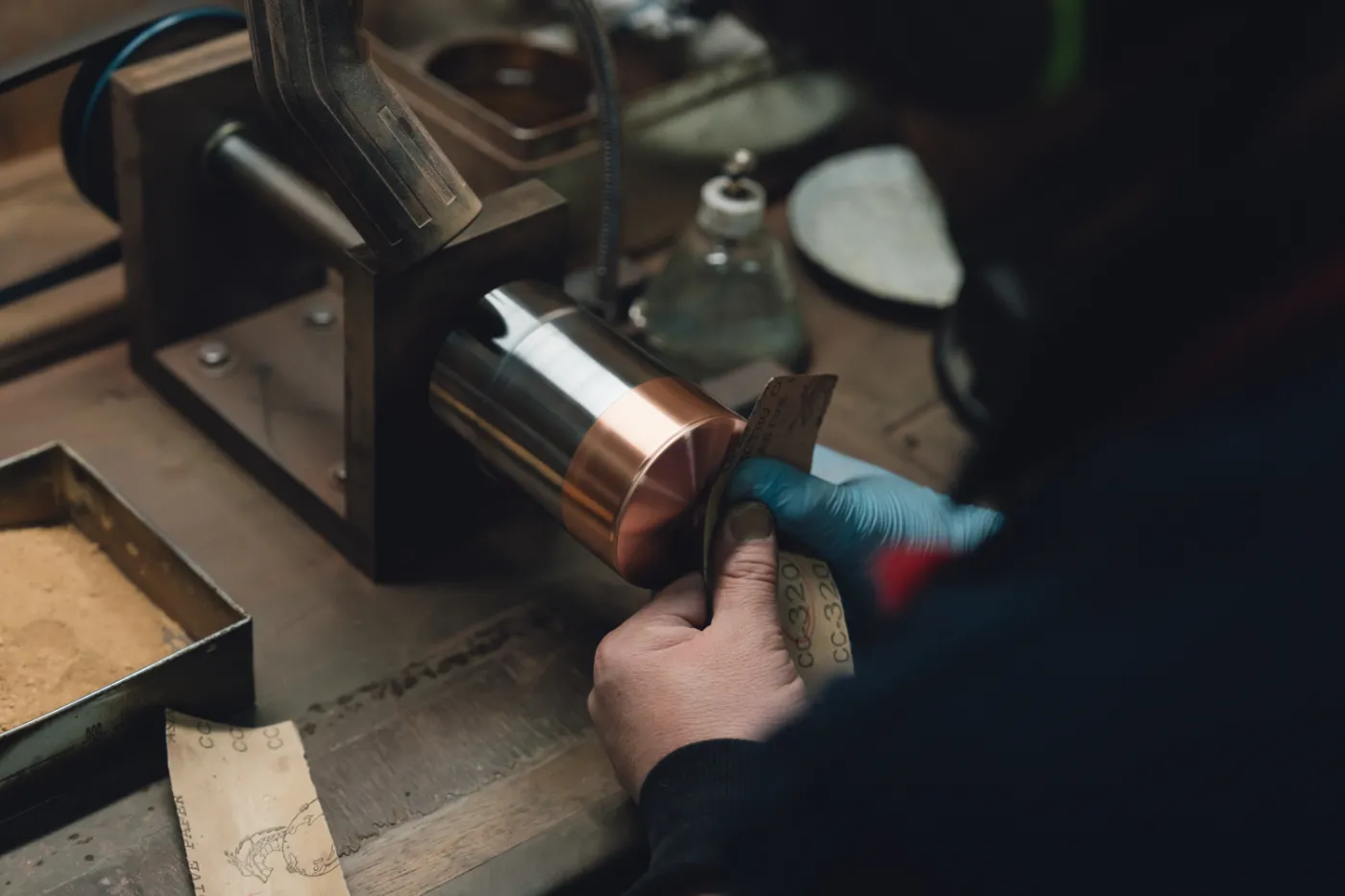
Everyone is Part of the Human Lineage
So learning by observation, and through your own trial and error, forces you to become very attuned with your whole being to the process of learning a skill.
Adding to that, I have another feeling. I feel that by creating or making the caddy we also learn from the caddy. So when I started this career 25 years ago, I learned how to make the caddy from the caddy. I saw and touched lots of my ancestors’ caddies, and through each one I learned about the essence of Kaikado’s caddies.
Some people think humans create things. But personally, I feel it goes both ways. We can learn a lot of things from the things we make.
And finally, I believe that as a craftsperson, it’s not I make; it’s we make.
Could you say more?
Yes, I am the sixth generation, so I always think about my father and also my grandfather behind me. At the same time, I think about my children and my grandchildren in the future. From that feeling or perspective, I decide what I should do right now.
People tell me I think about that point because of my family’s six generations in the craft. But everyone is some generation of human, so we all have a connection to our ancestors. We all have something passed over from our ancestors to us right now.
Everyone is part of the human lineage running through us from the past out into the future. This awareness should guide how we each act now.
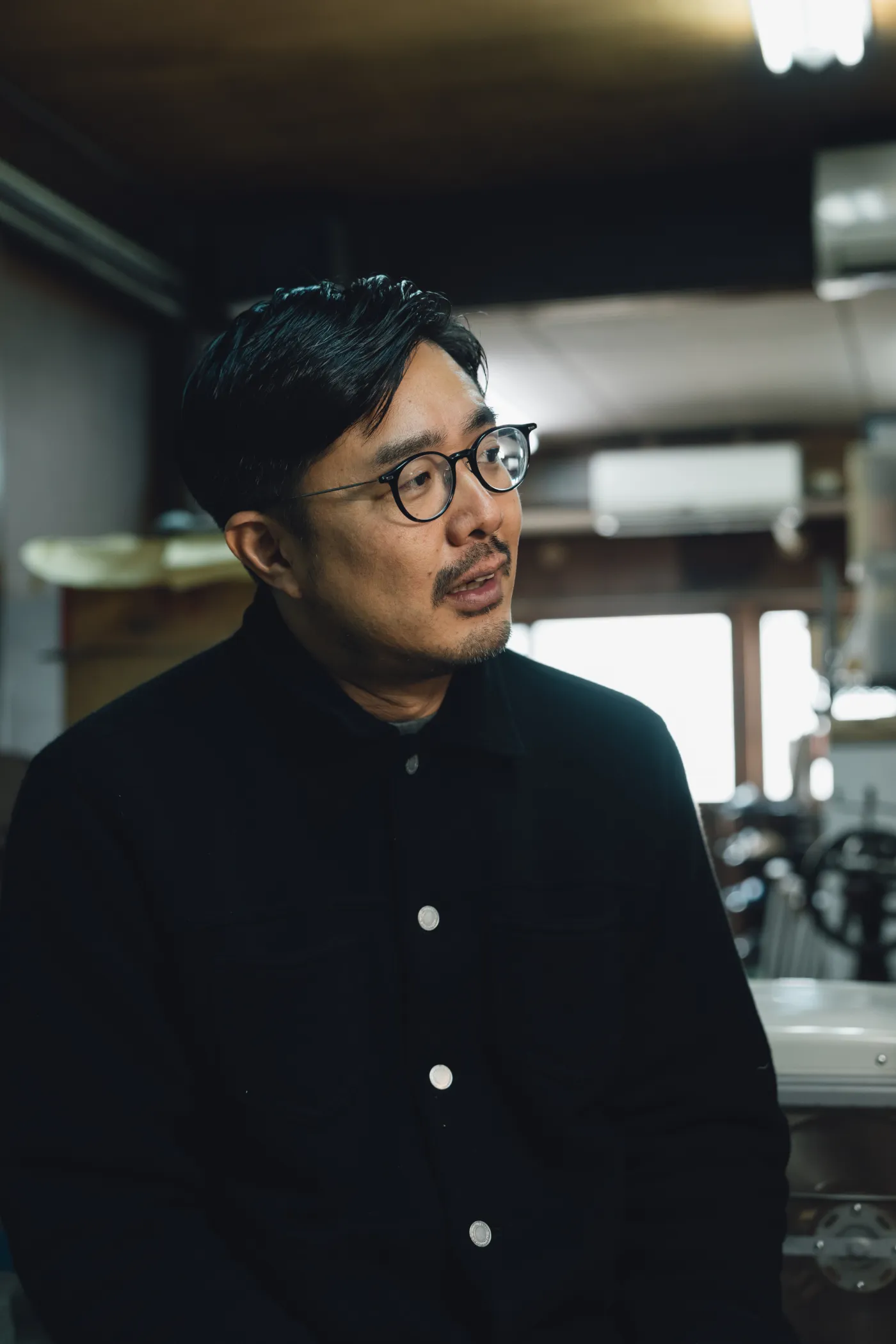
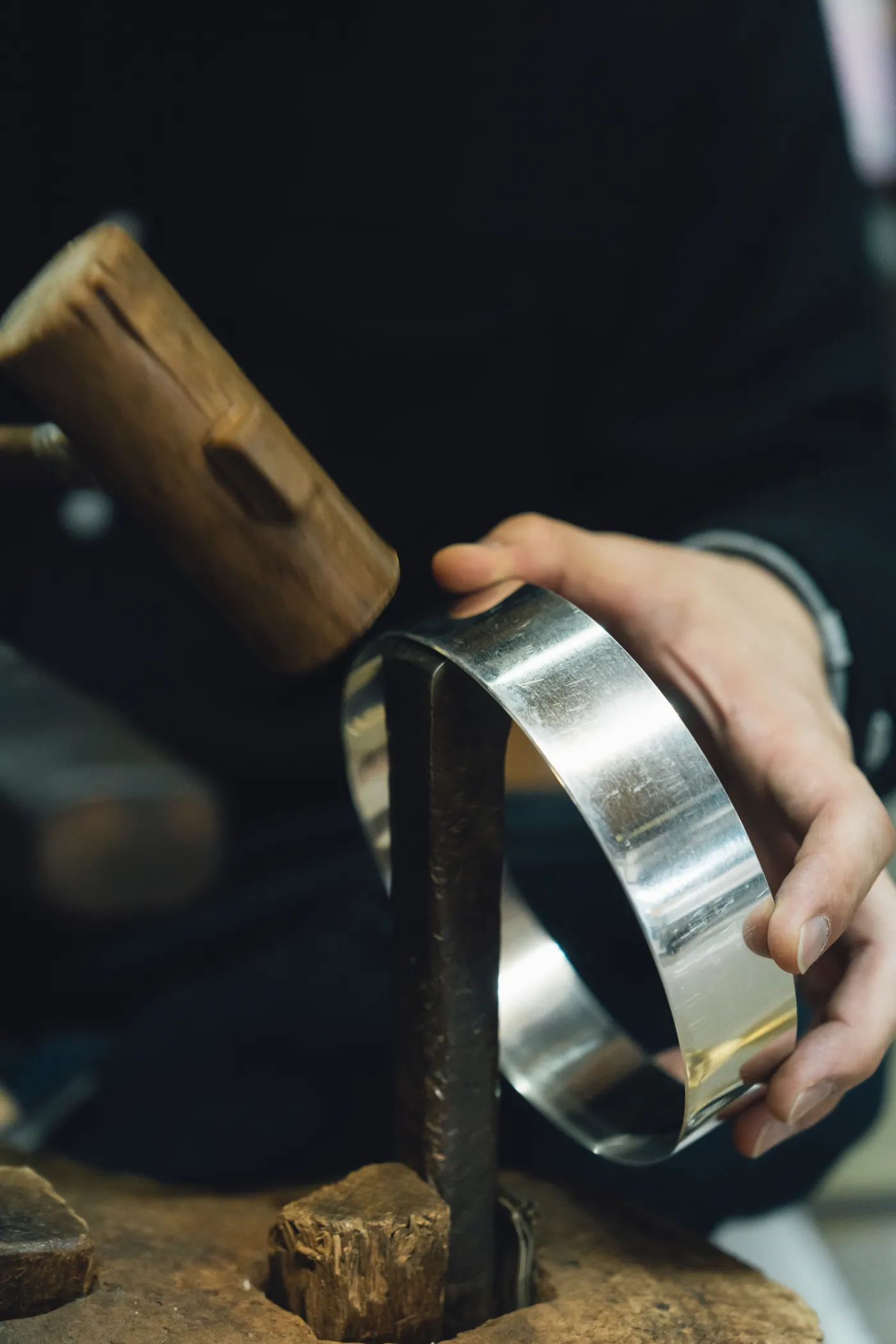
Thinking Long Term
This is also a theme you unpack in your recent book, where you challenge the current paradigm of scaling and growth.
People think too short term. Because of this we have almost lost our way.
Last year, I welcomed a person from a large coffee company in the US. He came over to Kaikado and asked me about the craft and my philosophy about the craft. I explained to him how I want to expand Kaikado to the world.
For me, I try to make a Kaikado family, little by little, in the world. In this way, we can expand while maintaining our essence.
But he asked me, “If we only make family, the number of people is too small. So what is the point?”
I told him about 100 years ago or 200 years ago, the population of the whole world was much smaller than now. Why has this population become so many right now? Because of the family, the number of the families has become bigger. That’s why the population becomes bigger.
So, if we only think short term we have to spread without the connection of family. But if we can take a longer perspective and timeline, like a 100 years or 200 years, little by little, family to family, we can still grow and continue, but in a much deeper and stronger way.
That very much resonates with the Musubi vision and mission. Honoring the power of connection and being a conscious bridge from the past to the future.
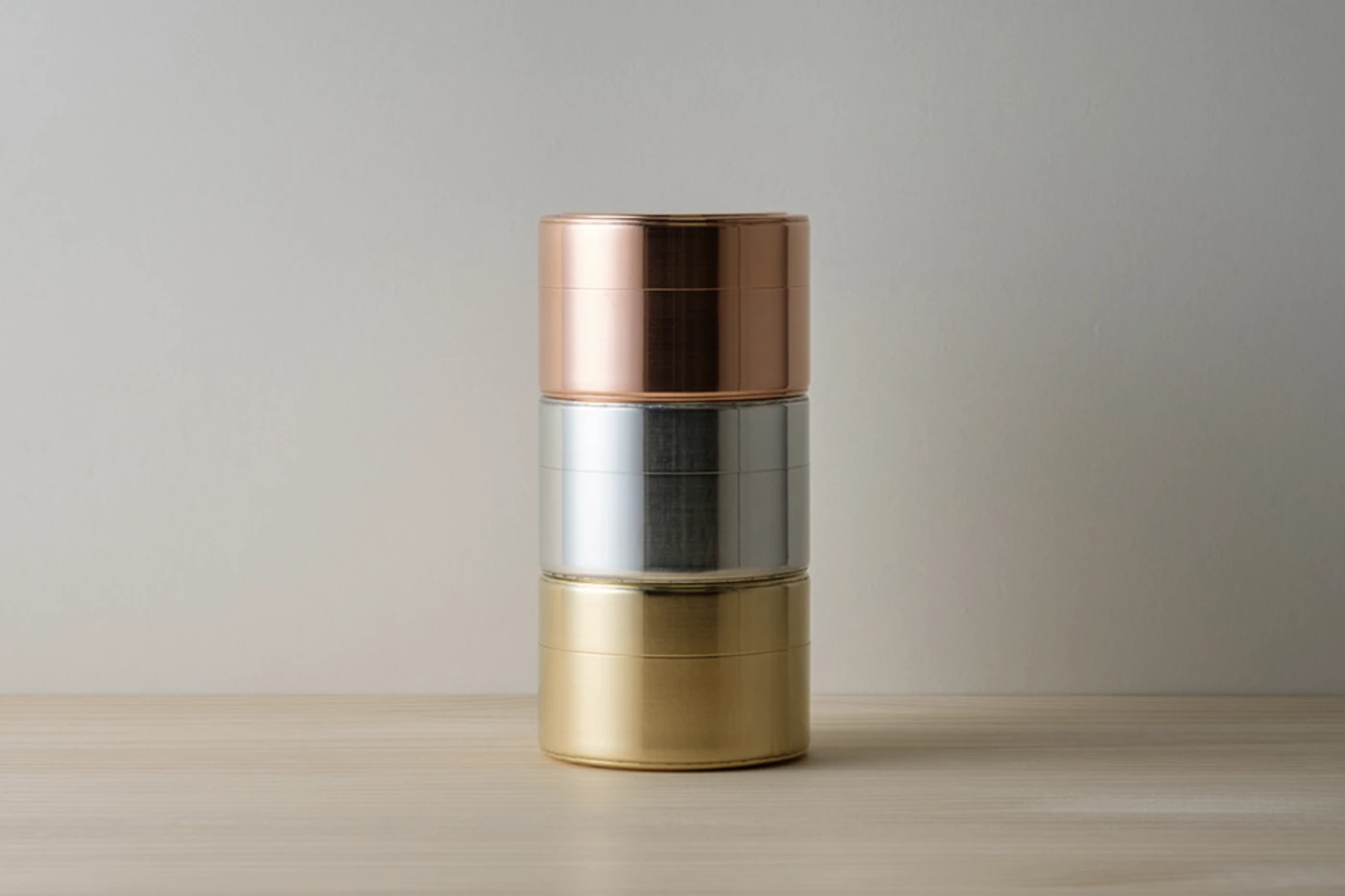
Something That Moves Our Heart
One last question in closing,
What is beauty to you?
I talked about it with fellow GO ON member Shuji Nakagawa before. He told me, “We all have something that moved our heart when we were a child.”
For him, his father was also a wood craftsperson. So once a month or once every few months, he would buy a big trunk and there would be a wood delivery into his house. The wood is taller than him and he was amazed by nature. He told me he was amazed by this when he was a child and it shaped his sense of beauty.
Then he told me, “You too have something like that in your own heart/mind.”
When I think about myself, when I was in primary school, our workshop was located inside the city, but we lived outside the city. So I came back to my house with my parents, around quarter past six, and then my parents tried to make dinner. But that would take about an hour and a half, so I would always play around the house.
There were lots of fields around the house. So at that time, I would always catch a frog. Then, at dinnertime, blue lights would gradually turn into the black. The twilight. The color of the sky. I really loved that time.
I talked about it with Shuji san and he told me “That is a Kaikadoness!”
What? Why? He told me, “Your lids slightly go down. It’s the same as your feeling.”
Ahh, that makes sense! [laughs]
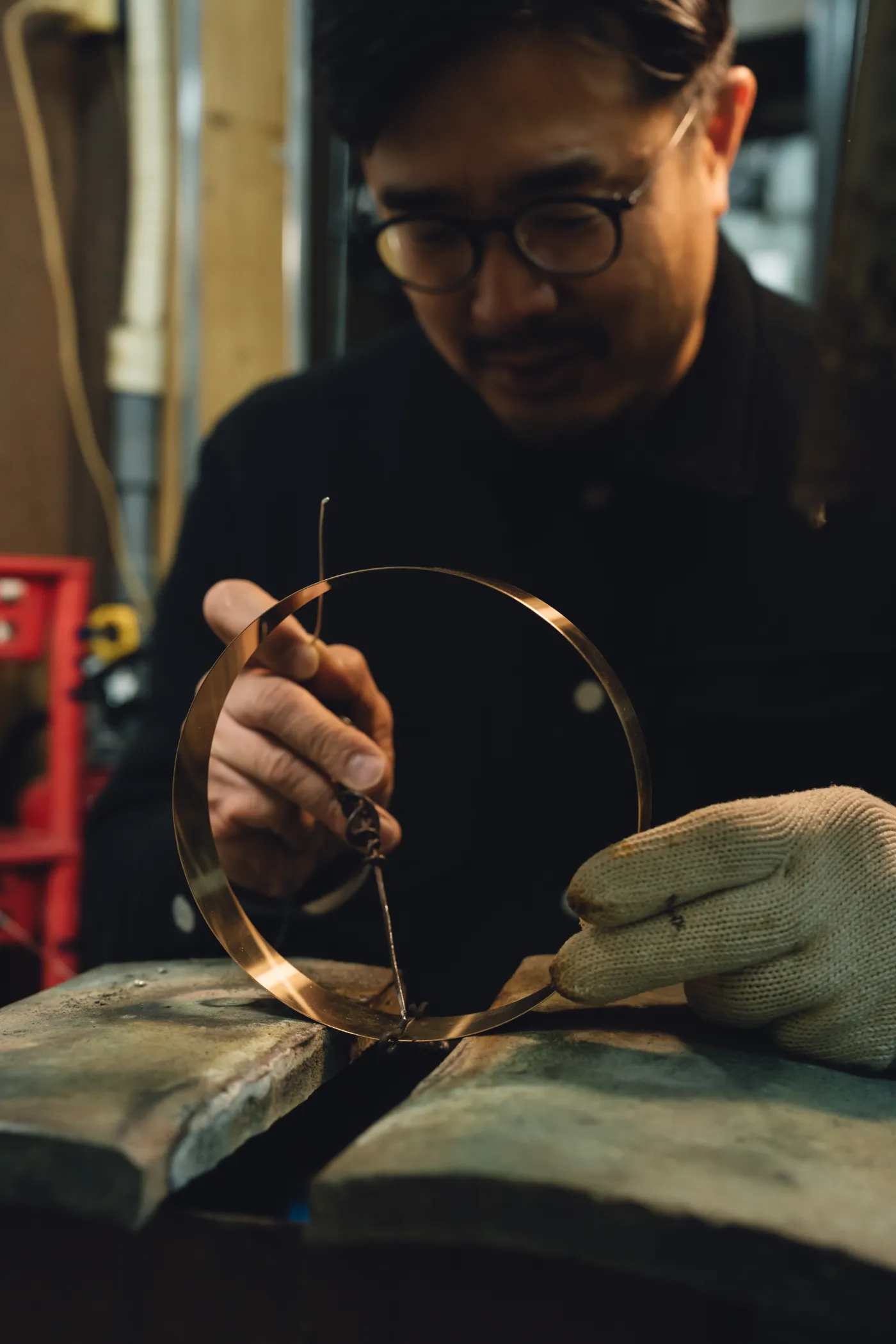
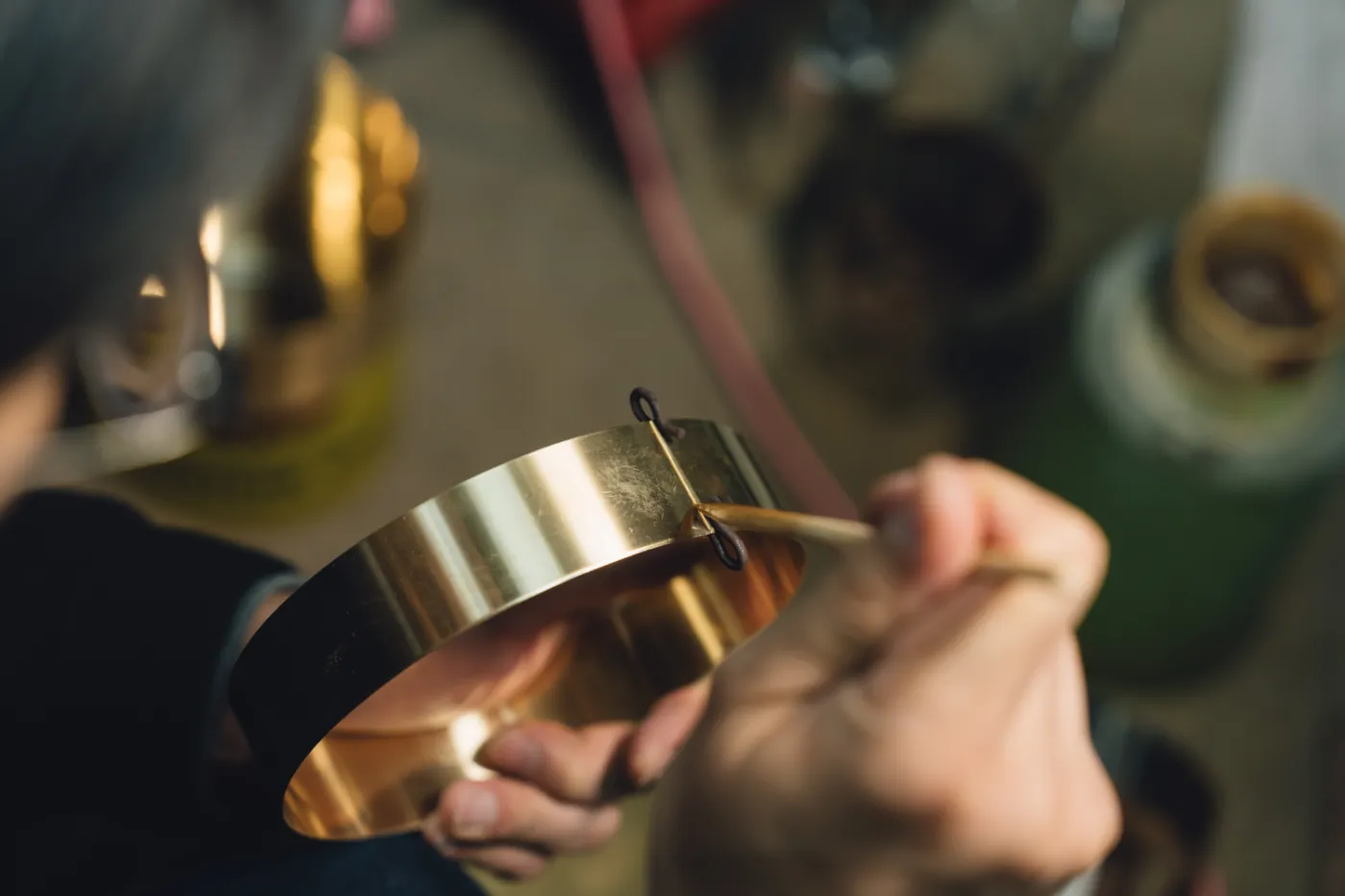
The Essence of Craft
Also, for me it’s the patina changing the color of the material of the caddy. The timeline is very wide, but it’s the same kind of beauty. Gradually, the color of the material changes into the dark.
I think everybody has points of beauty in their mind or heart.
For me this touches on the core value of a human being making something, and the essence of craft. Making things for the heart of the human, not just for the money.
Then, if the things we make connect to a human’s heart, they never forget. Like twilight time for me, like a big tree for Shuji san. Once something is deep in my heart, we never forget and also we can pass it on to the next generation. I think that is the essence of craft.
Any final thoughts or invitation for the reader?
Let’s think long term.
For Kaikado, if I link with a point from when my first generation started 150 years ago and can see the straight line until now, I can also see there is a future straight ahead. Churchill said. “The farther backward you can look, the farther forward you are likely to see.” I think that is a very good point for us.
So when I think about what to do now, I always think about my ancestors, what they were looking for.
